
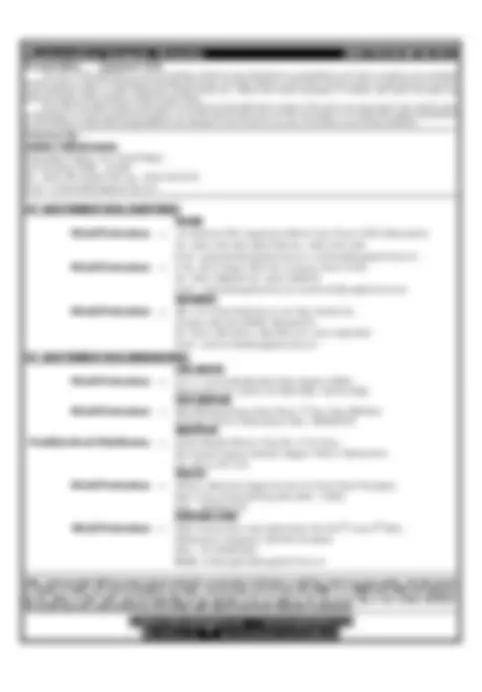
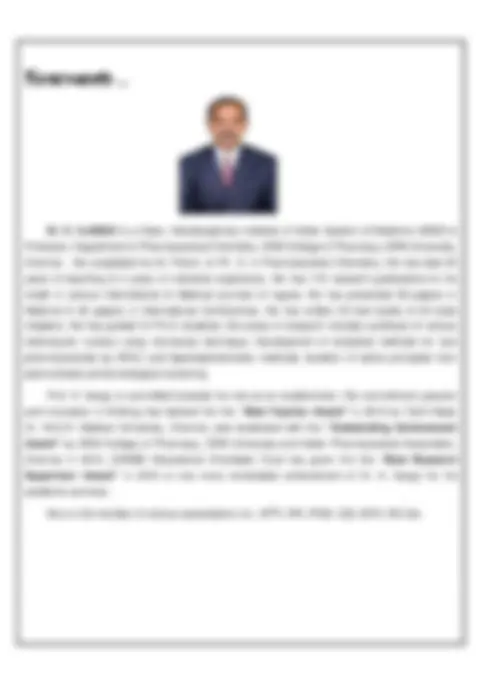

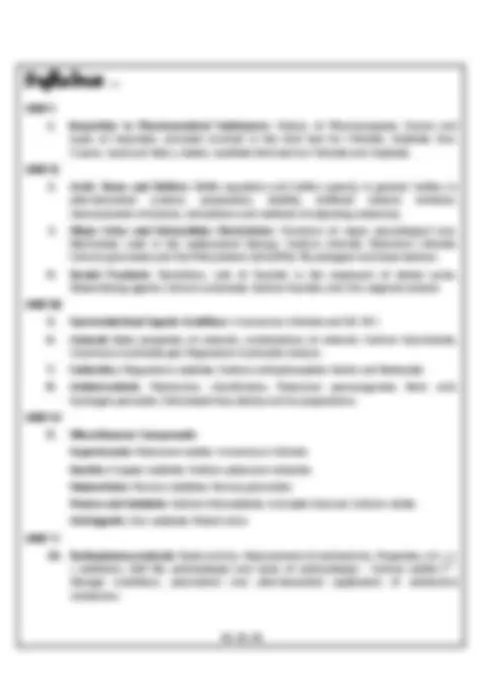
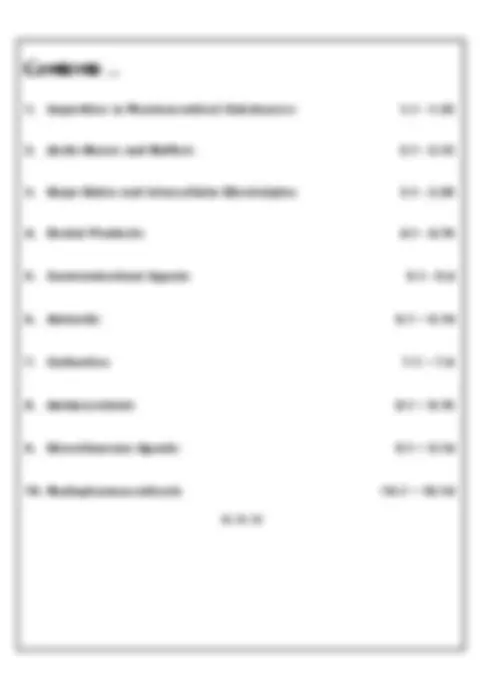
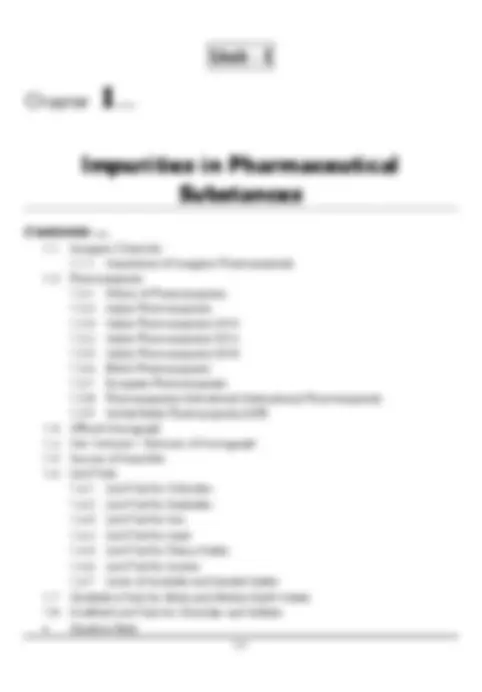
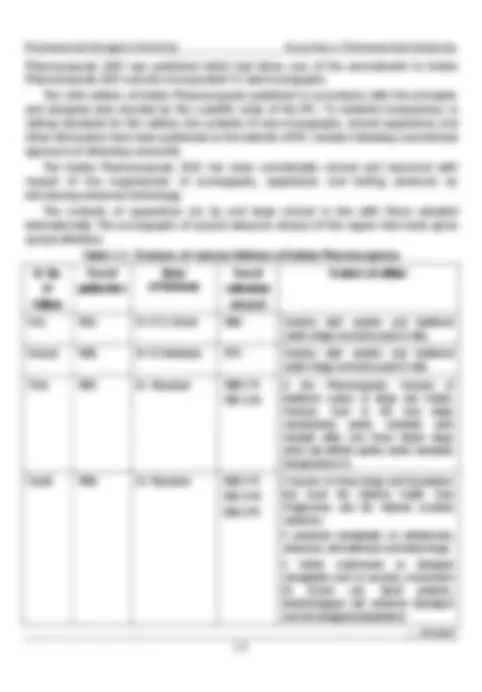
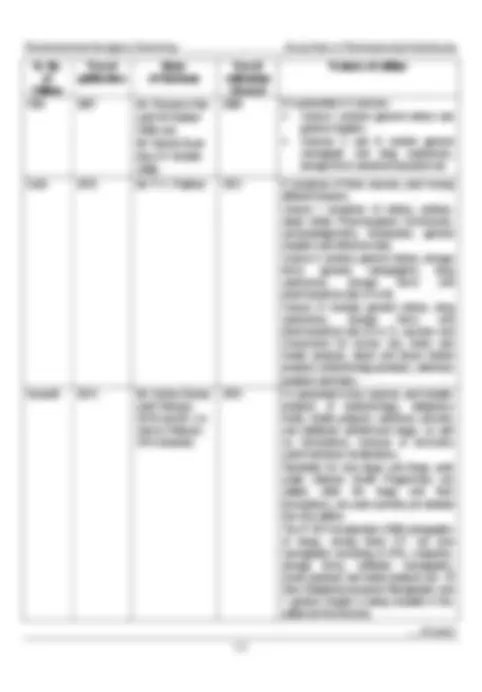
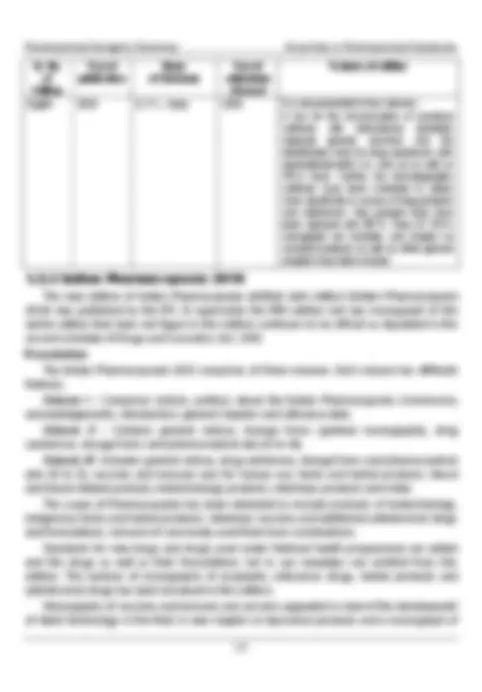
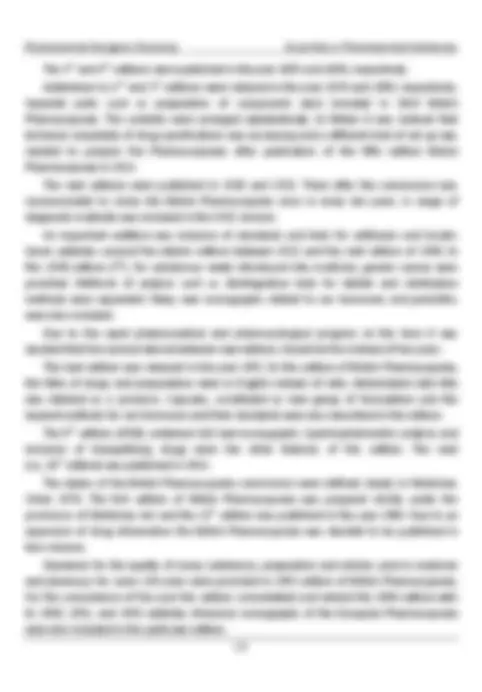
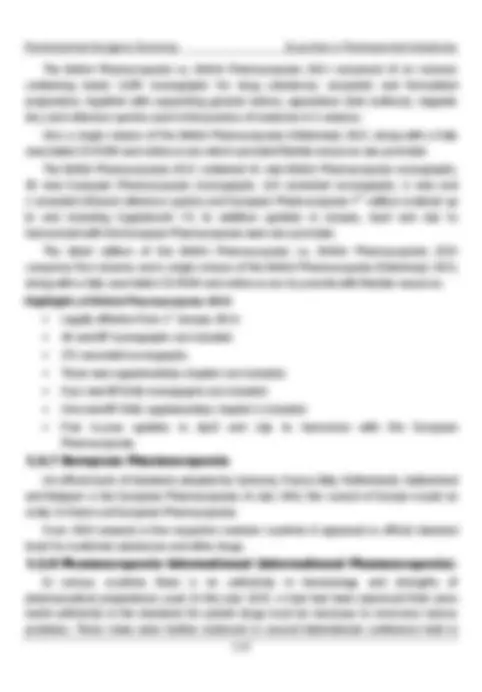
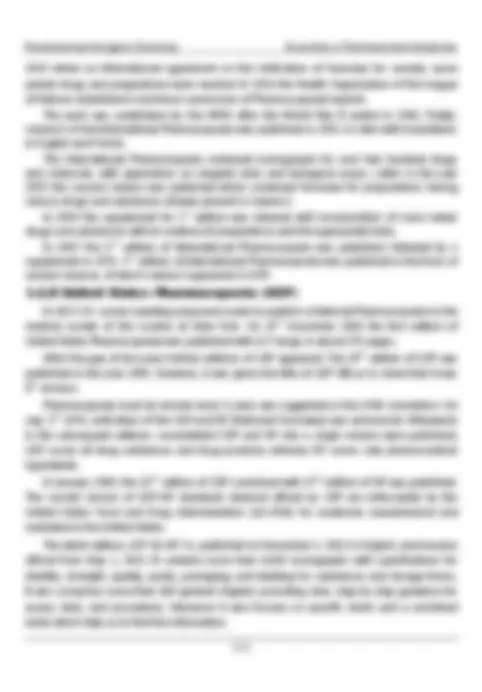
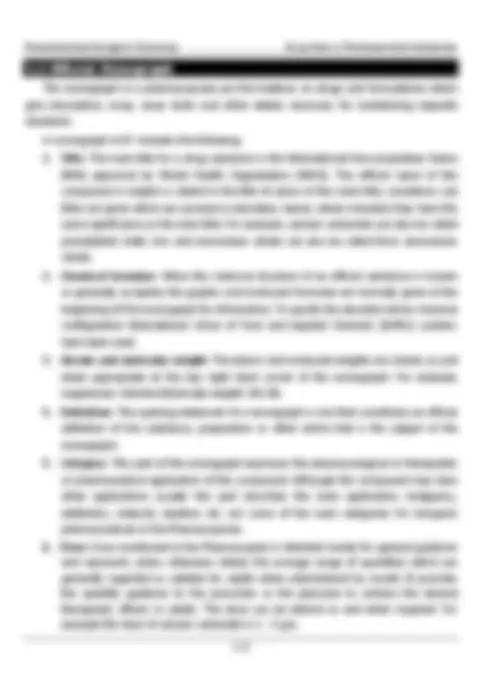
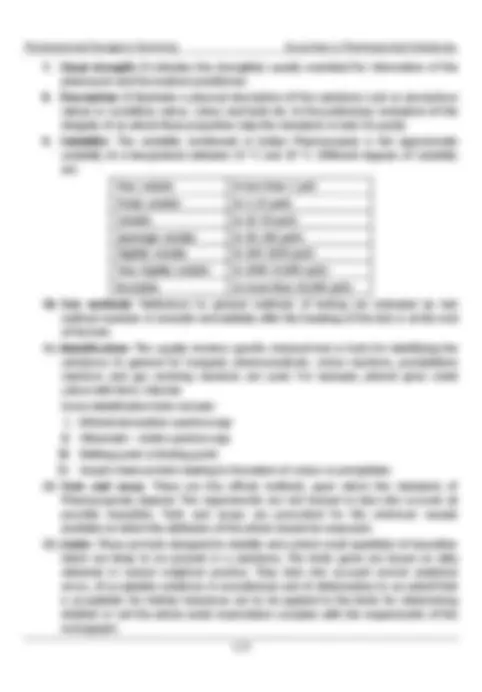
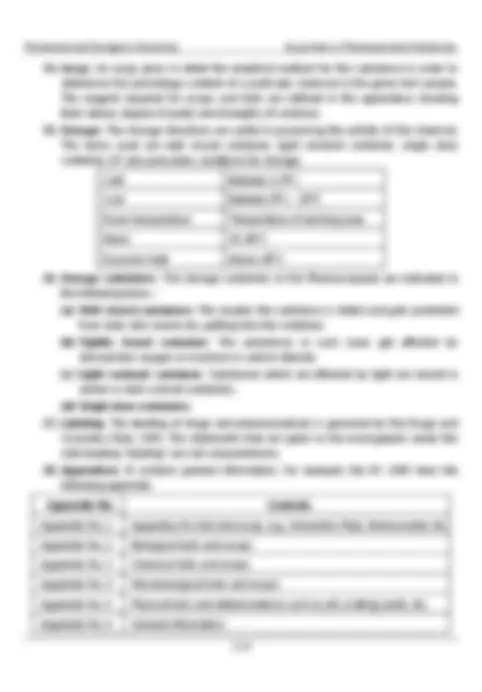
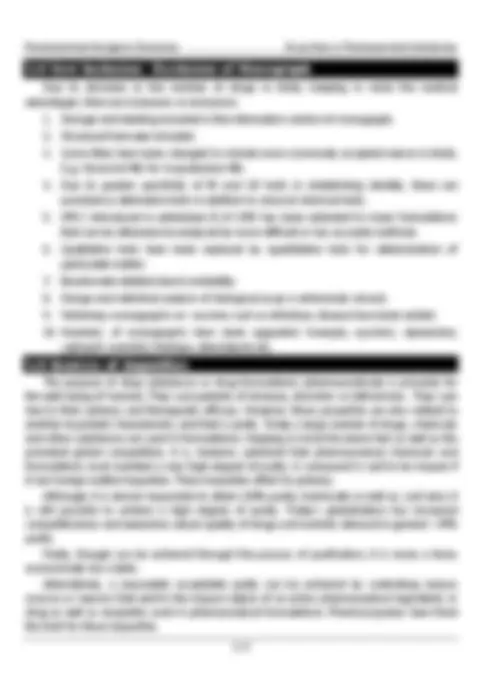
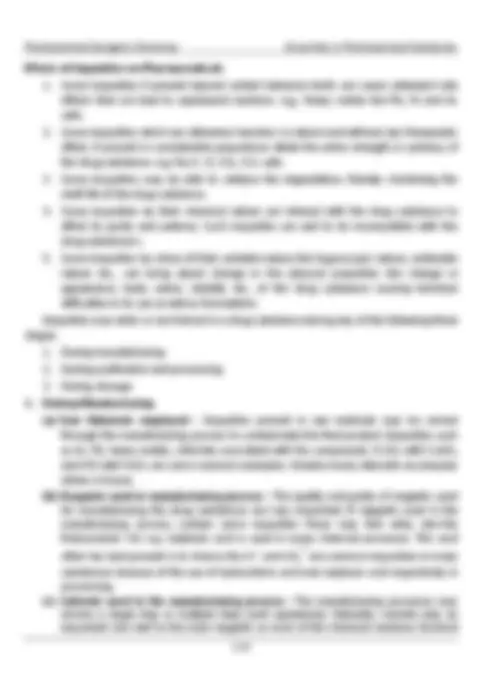
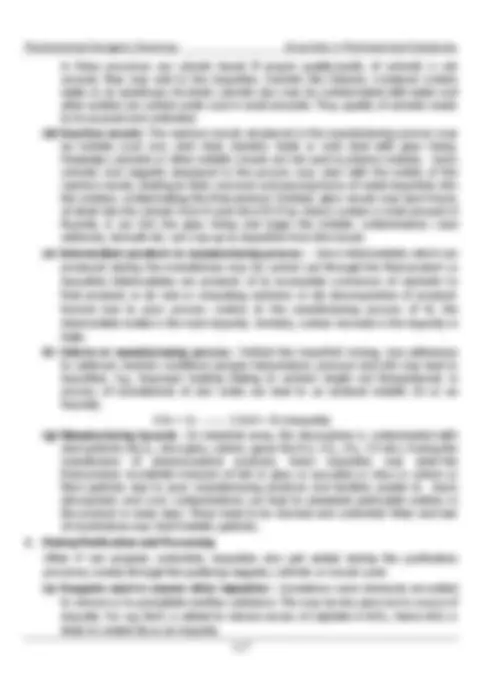
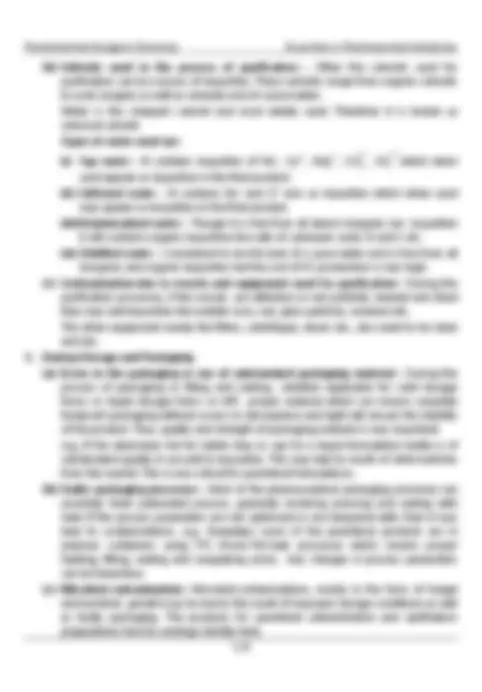
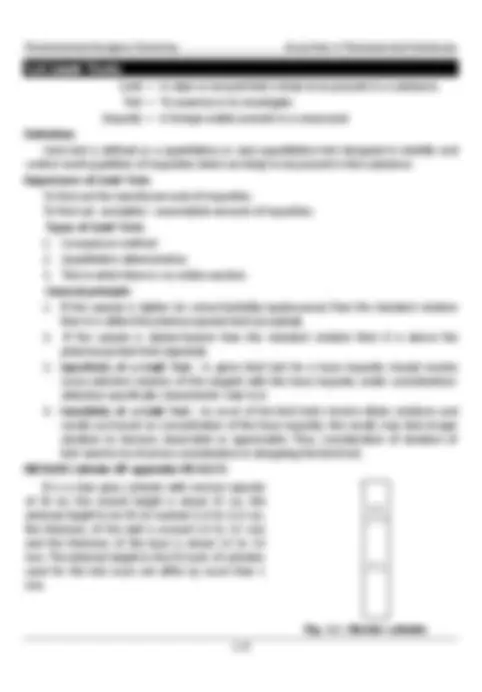
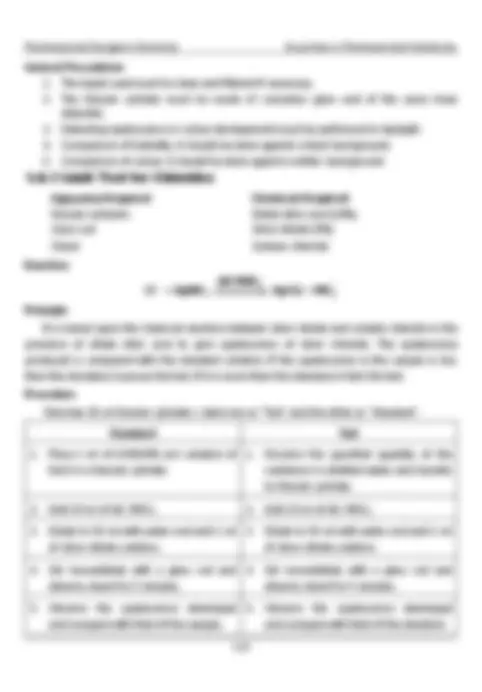
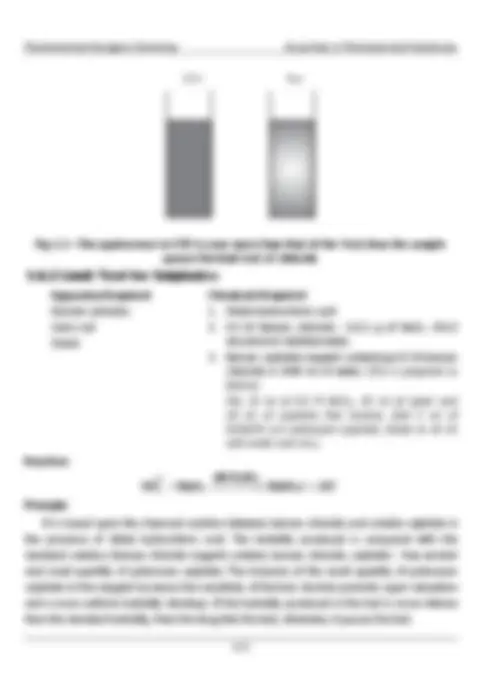
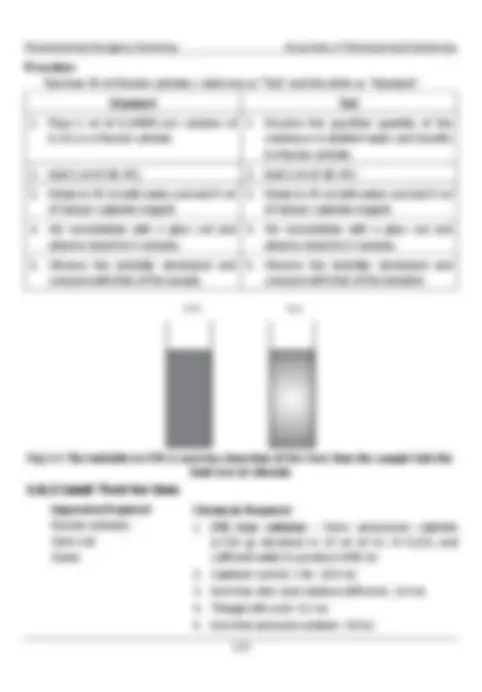
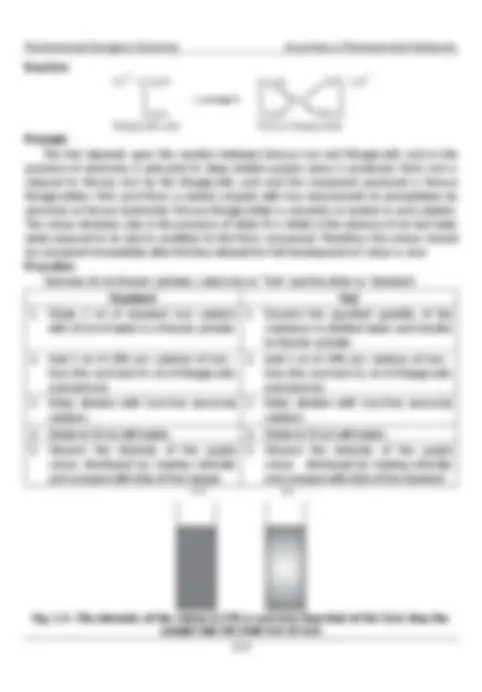
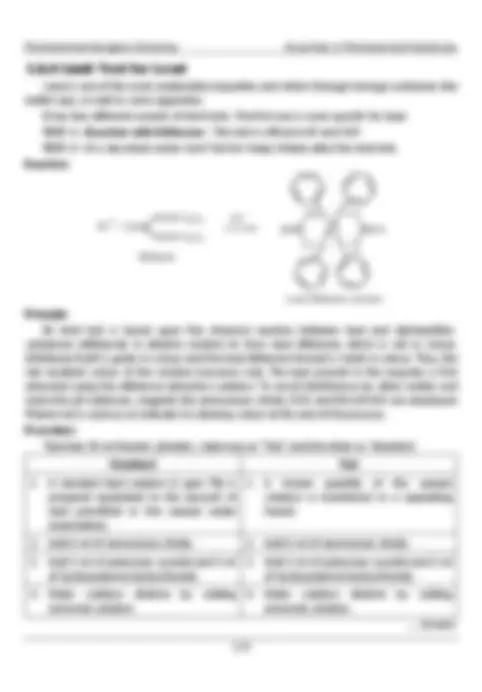
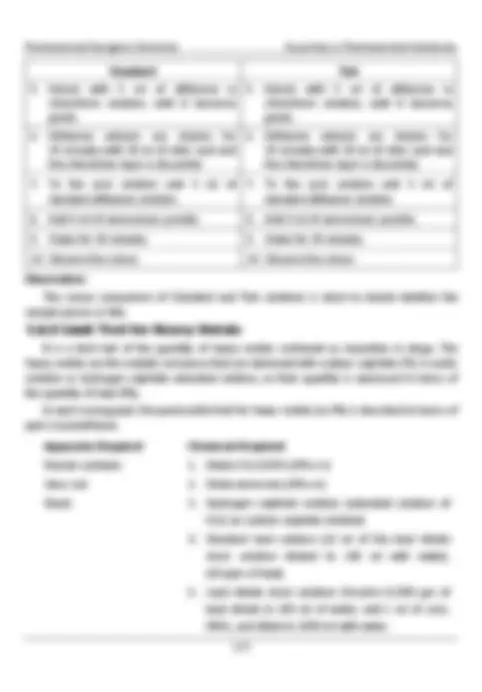
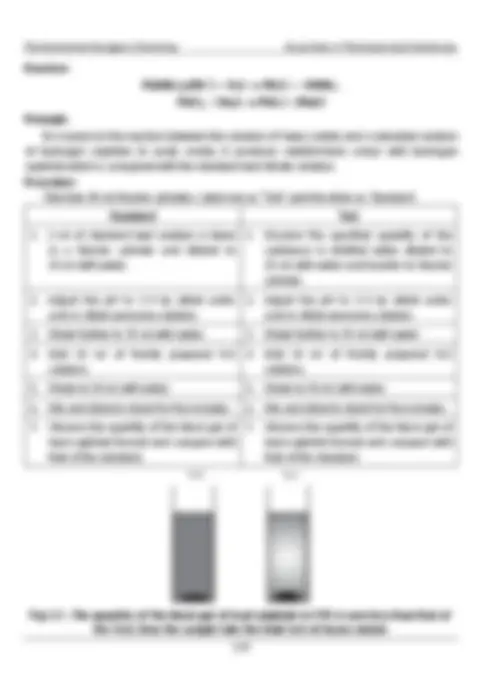
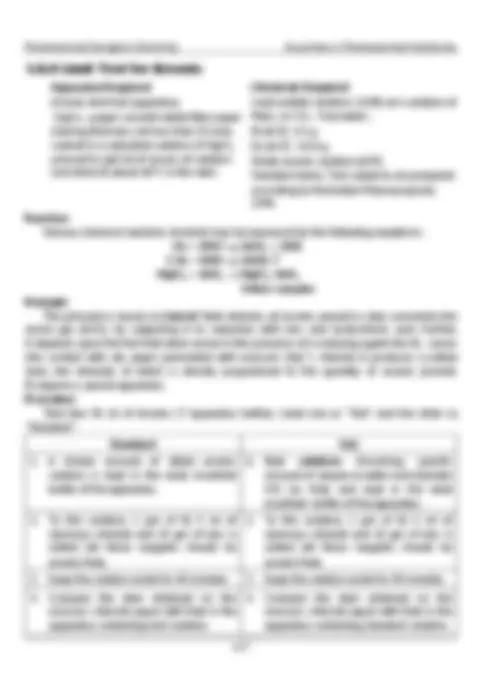
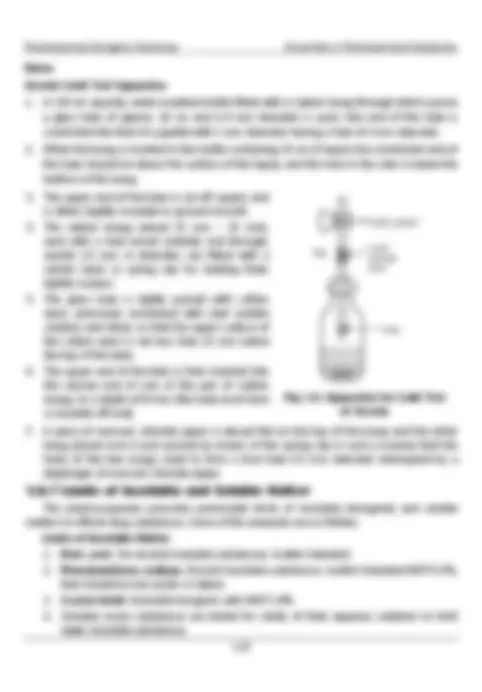
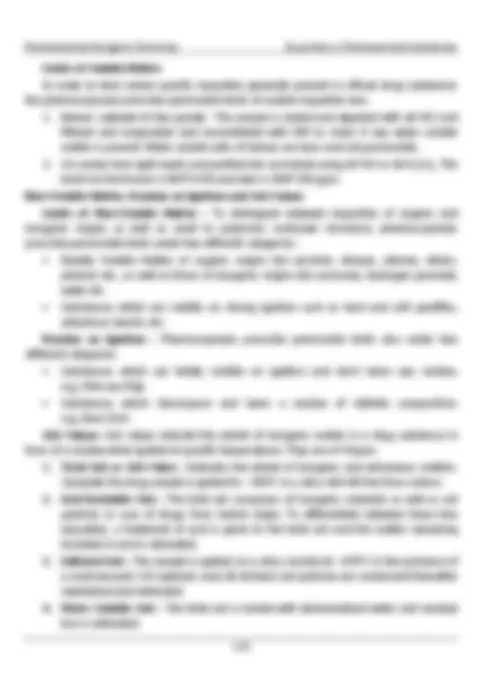
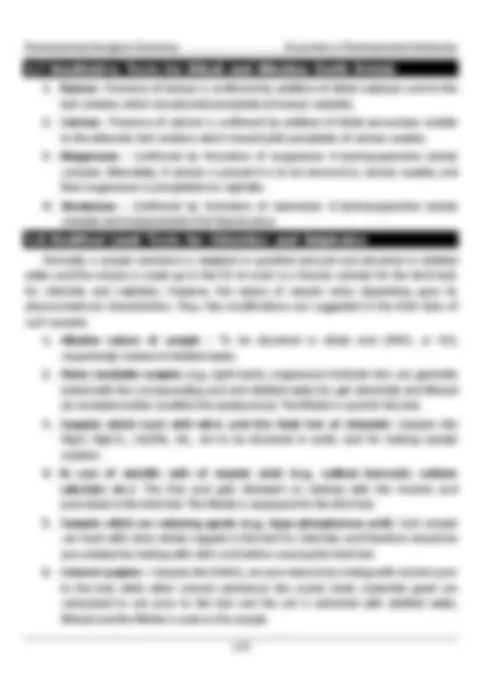
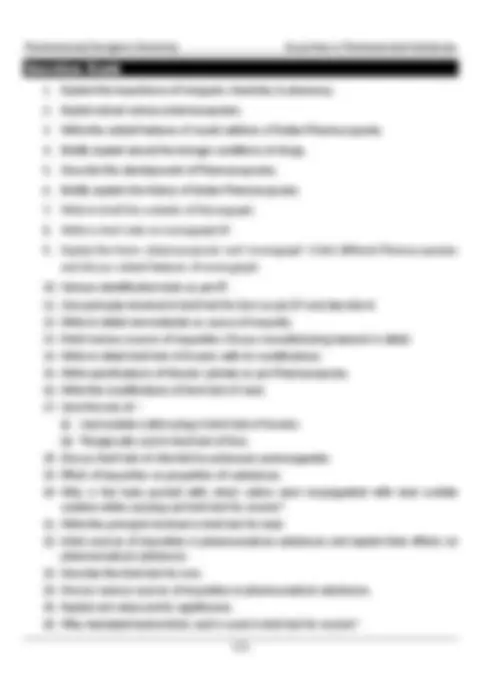
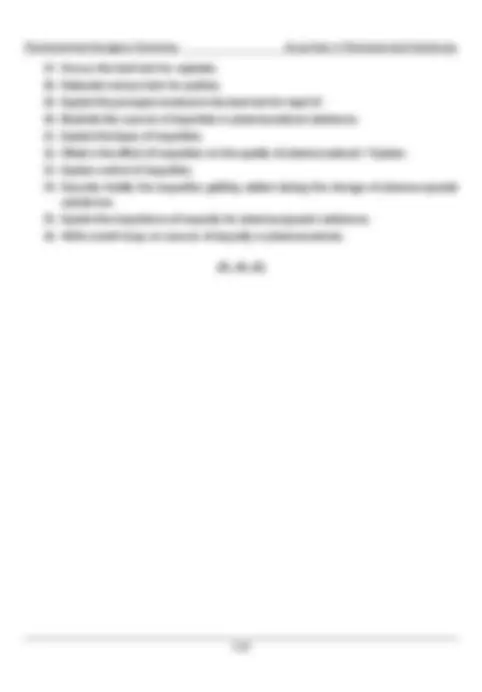
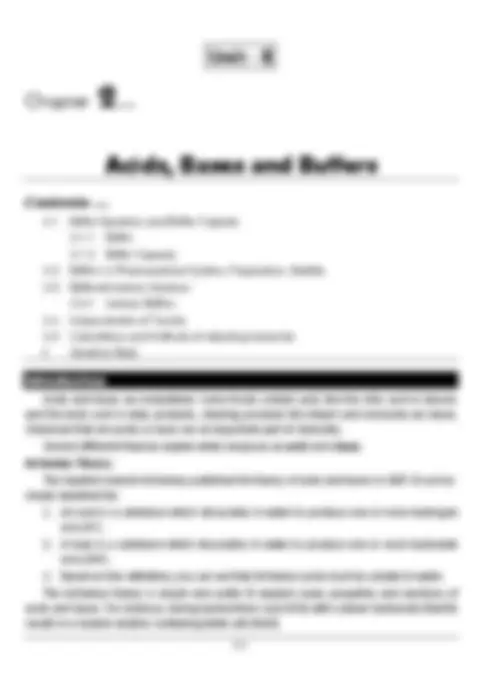
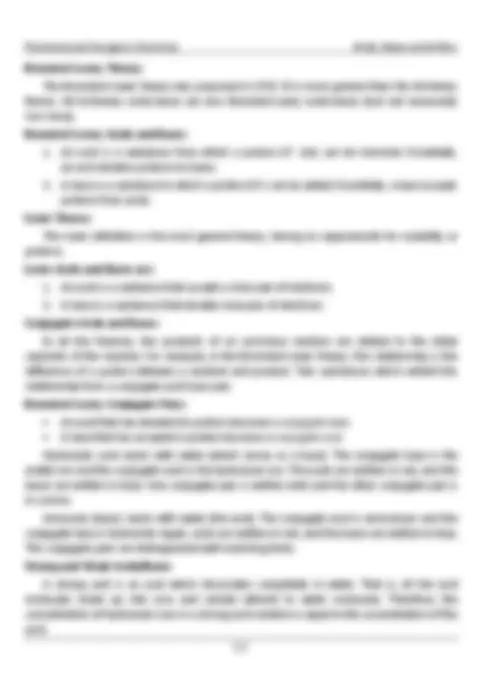
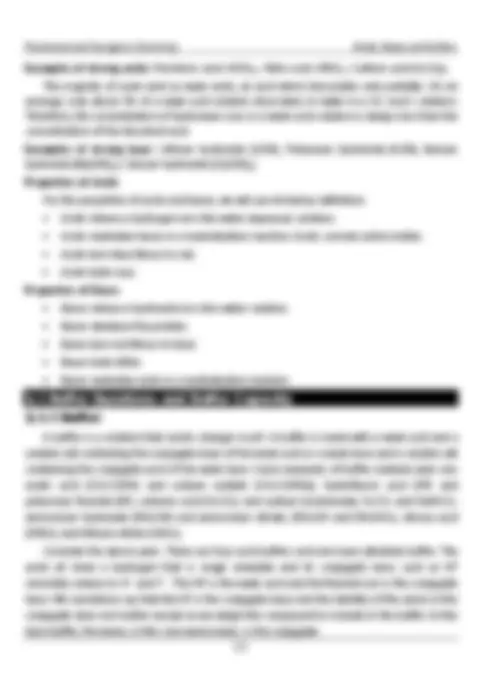
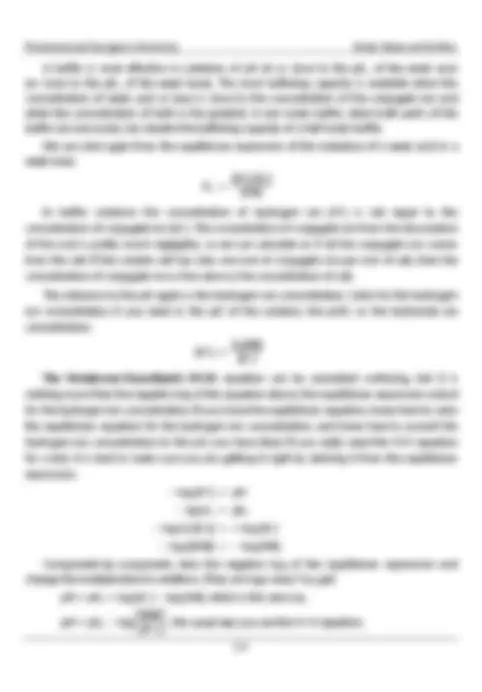
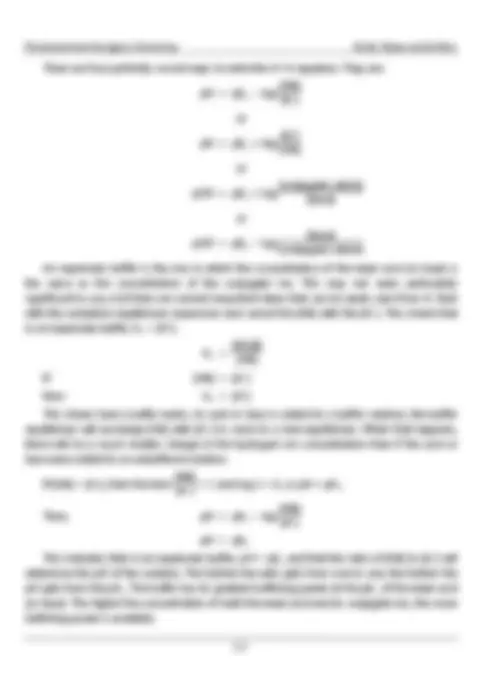
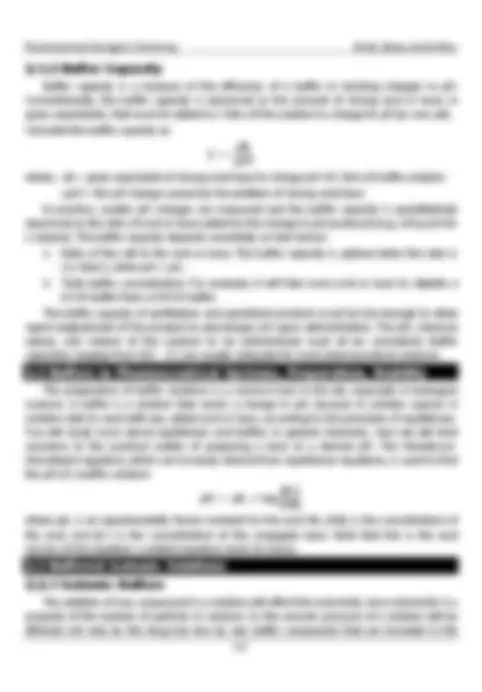
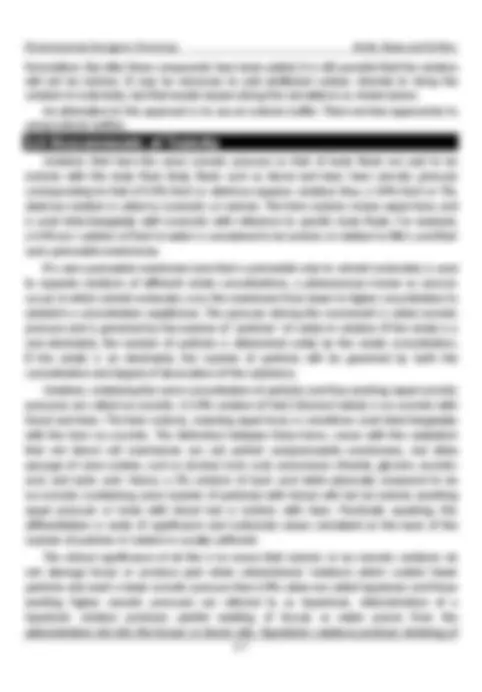
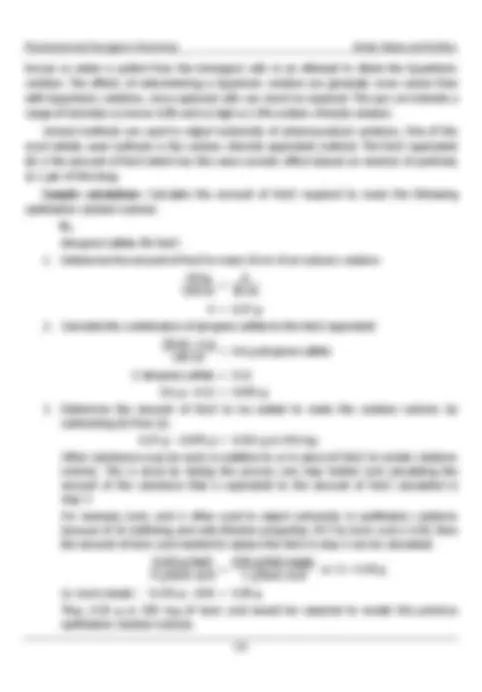
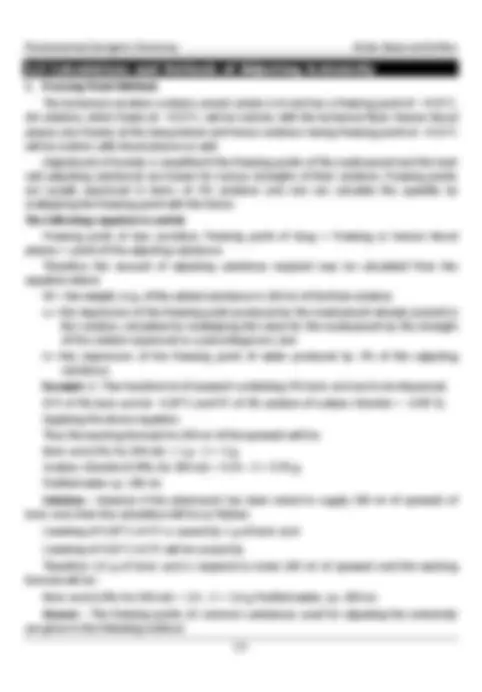
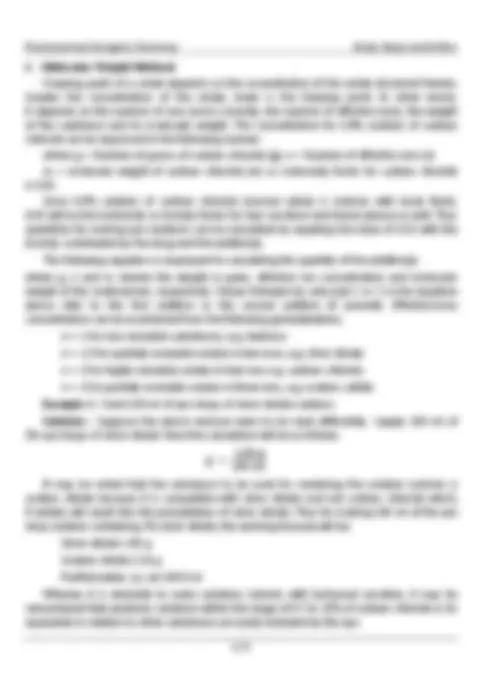
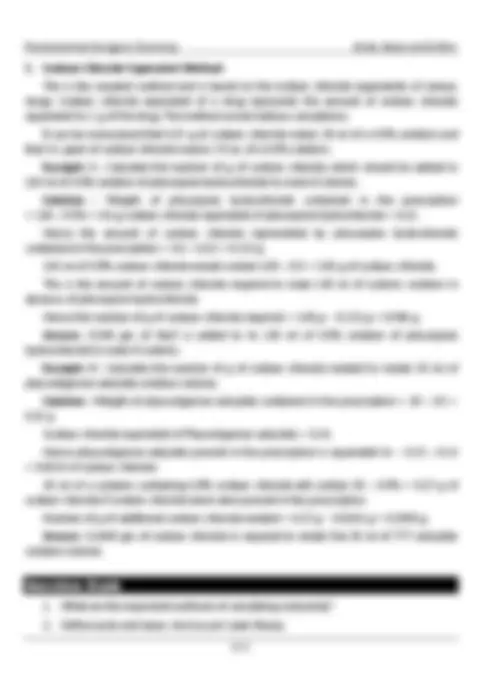
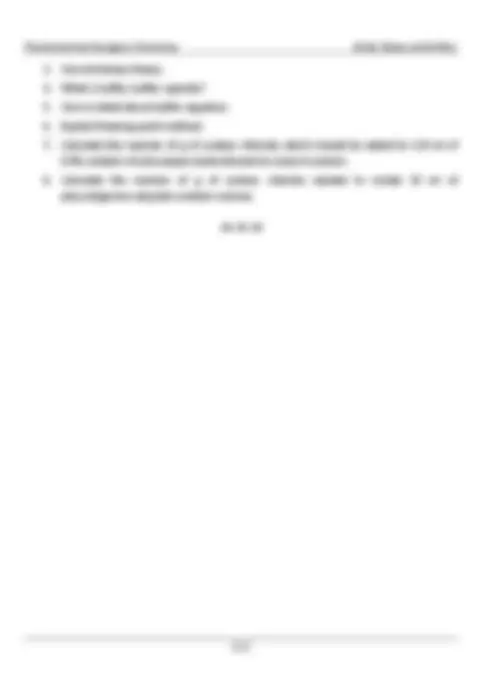
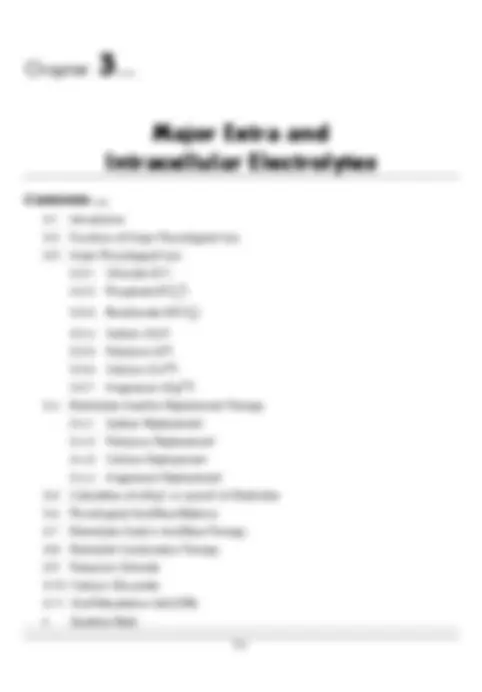
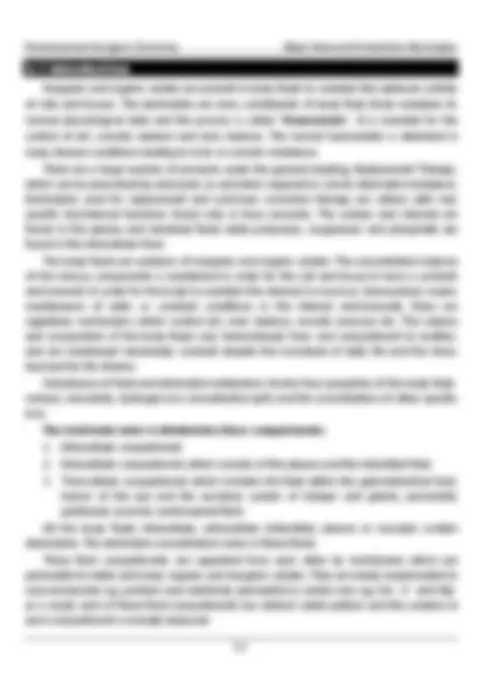
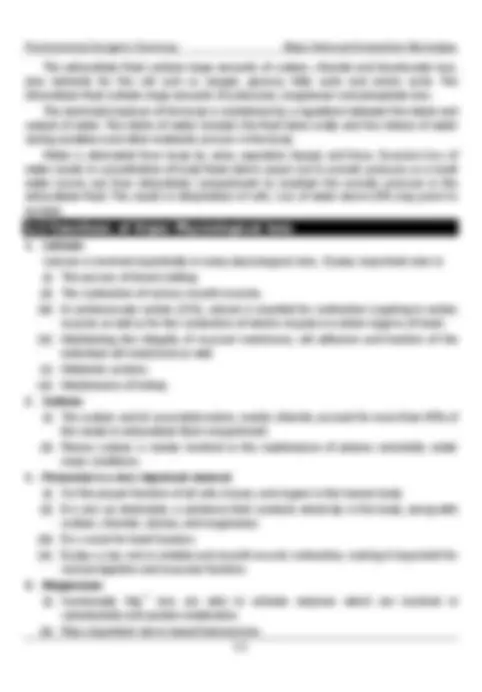
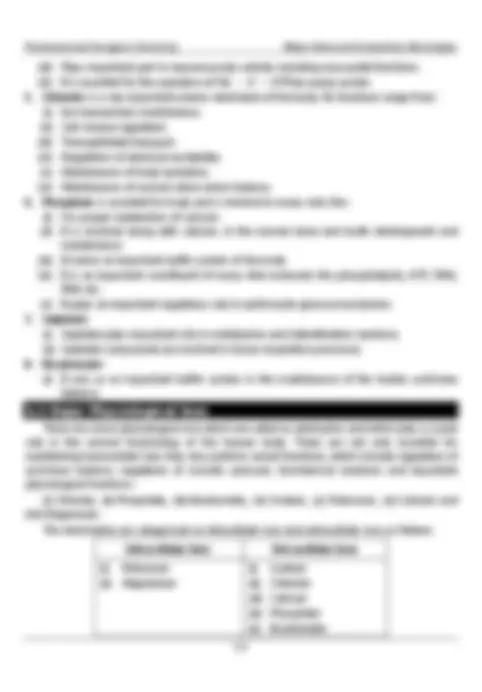
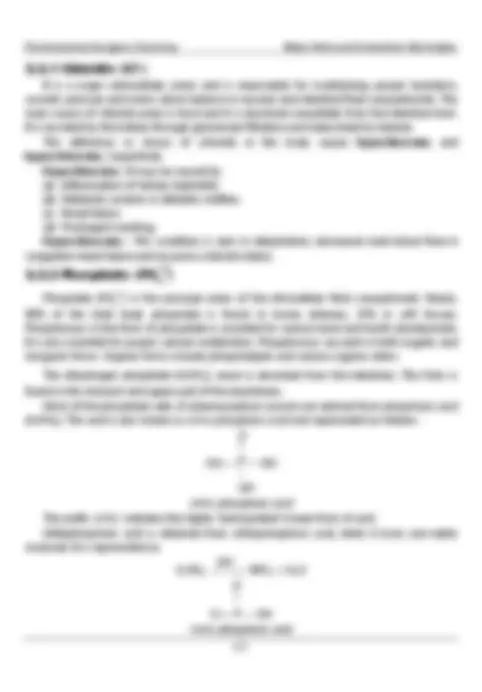
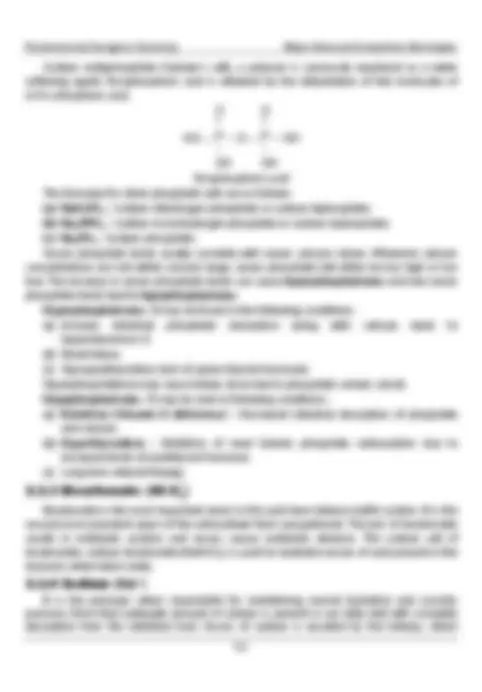
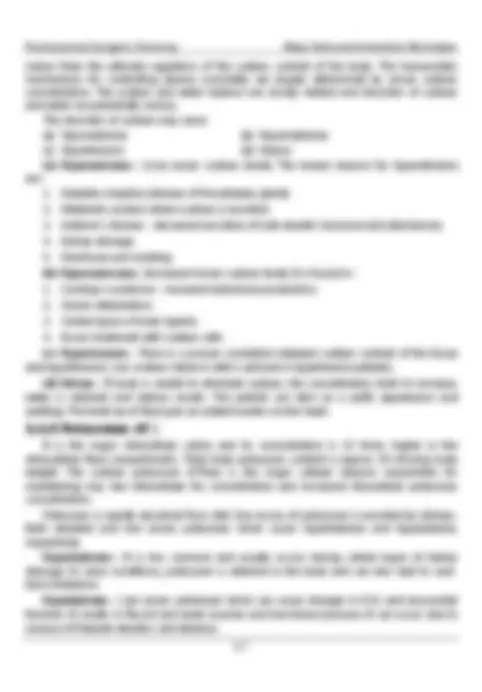
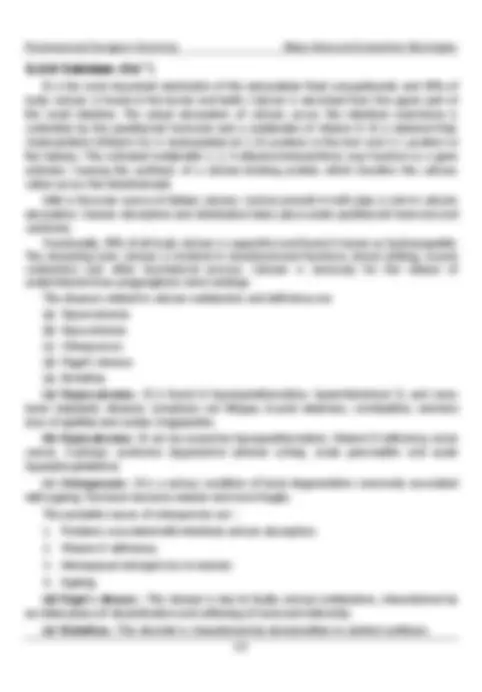
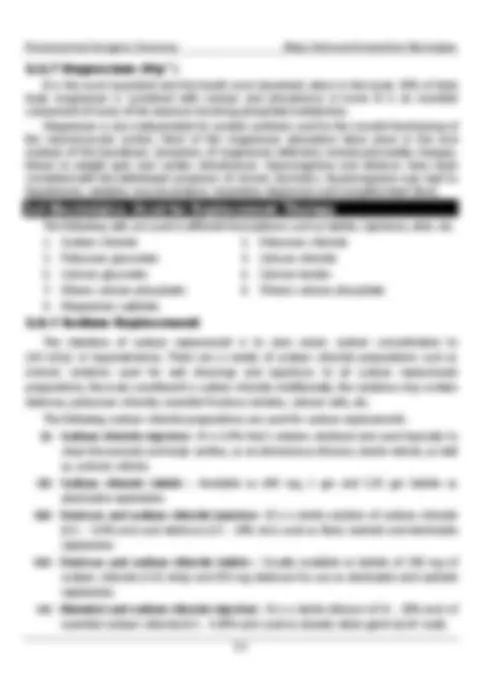
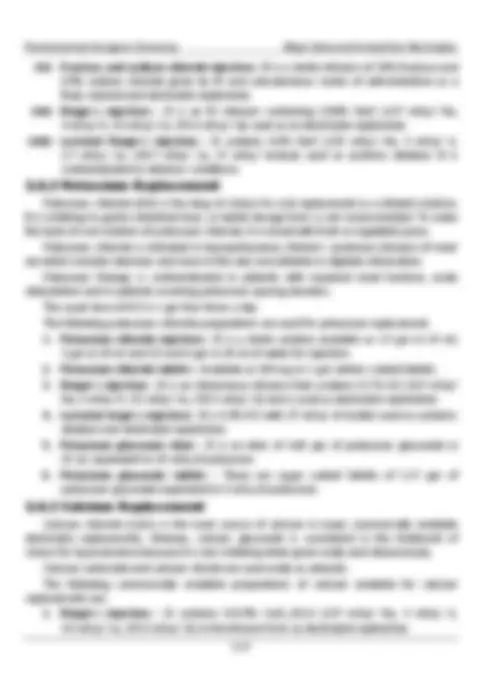
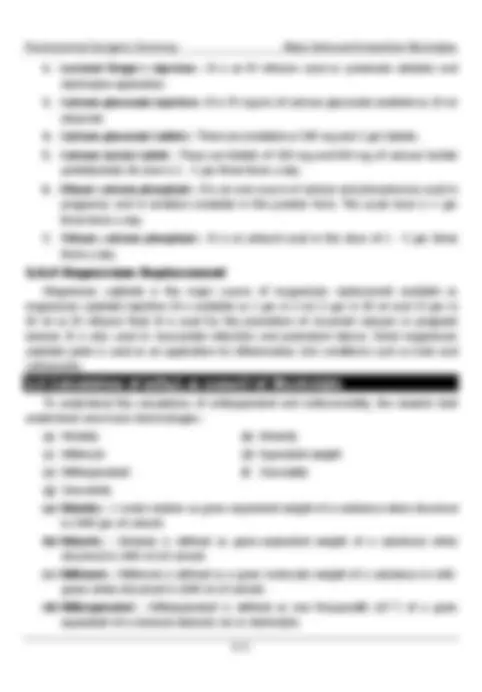

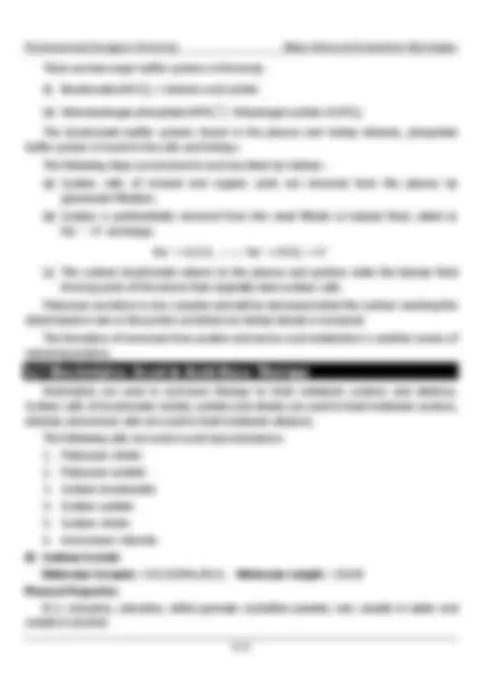
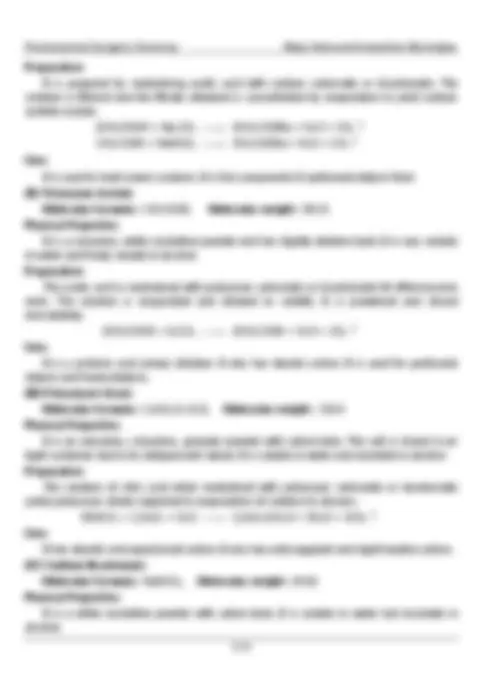
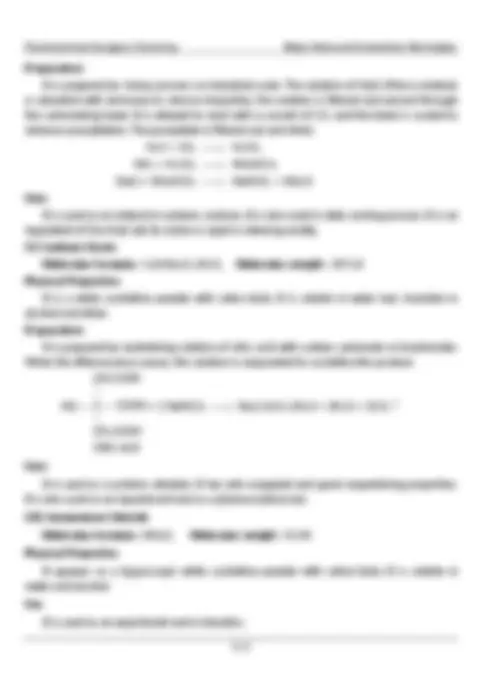
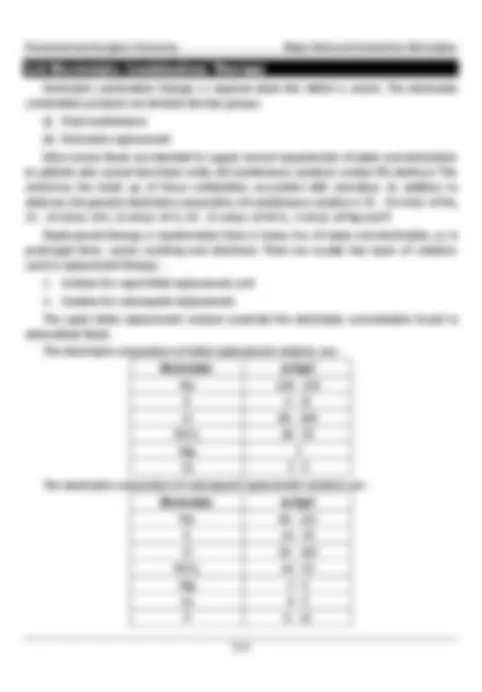
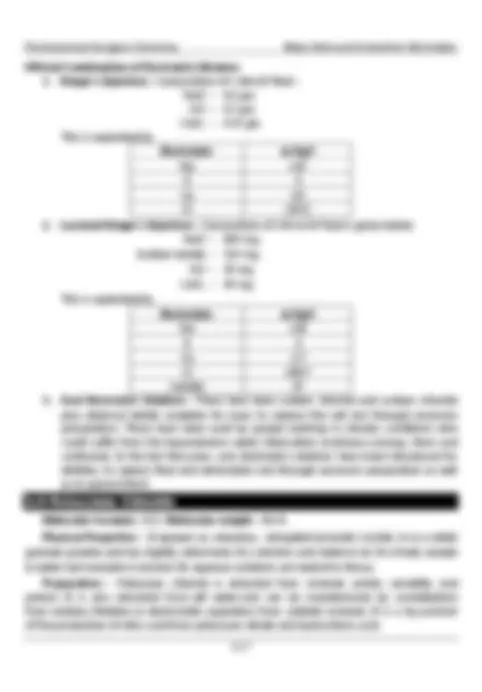
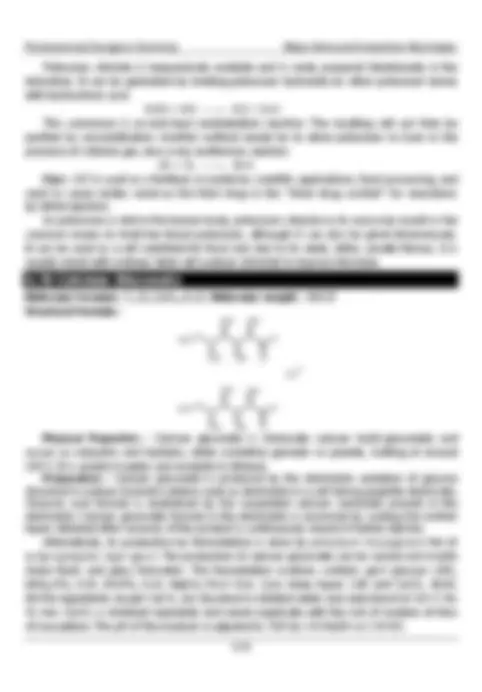
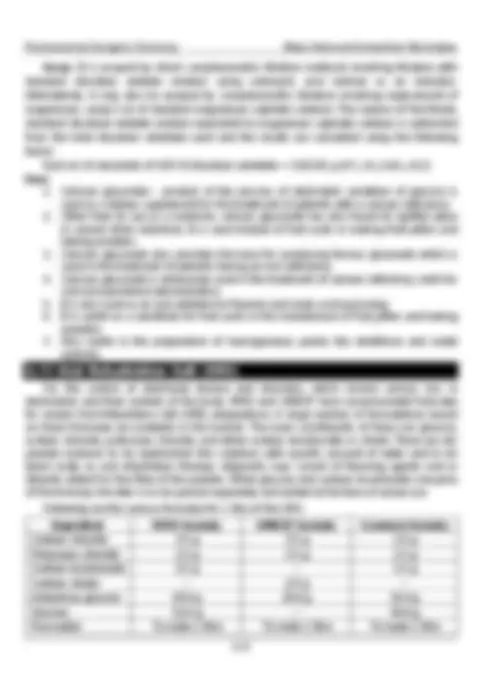
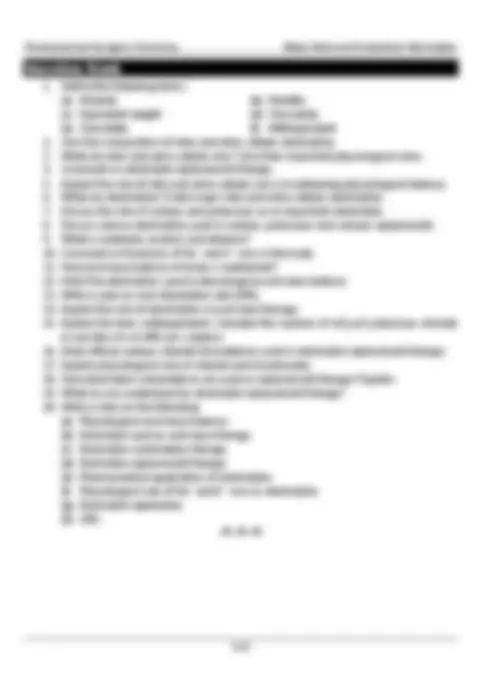
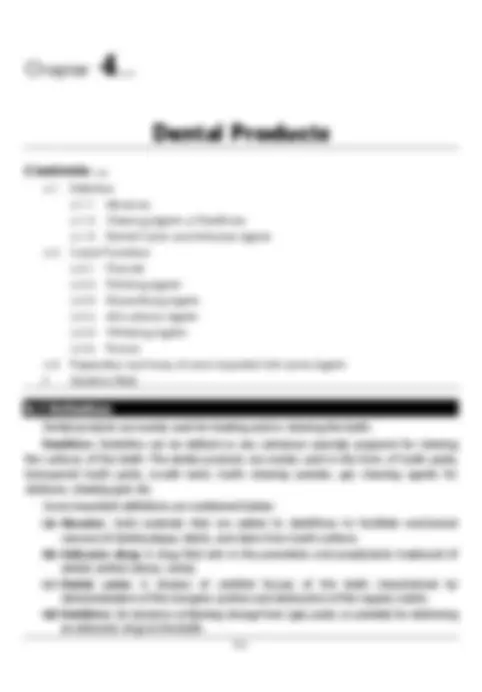
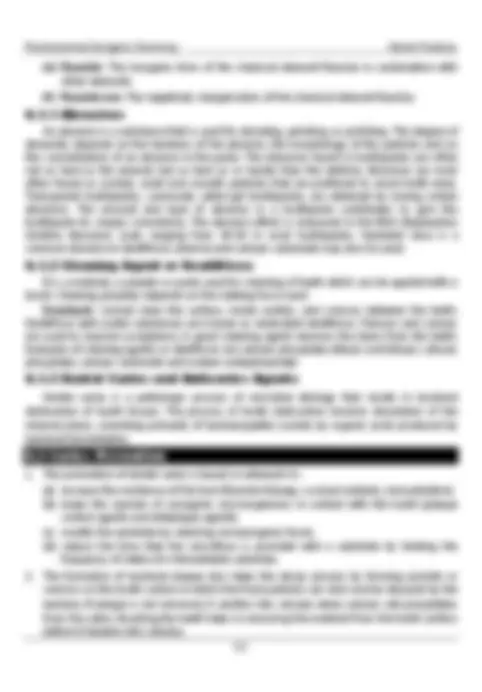
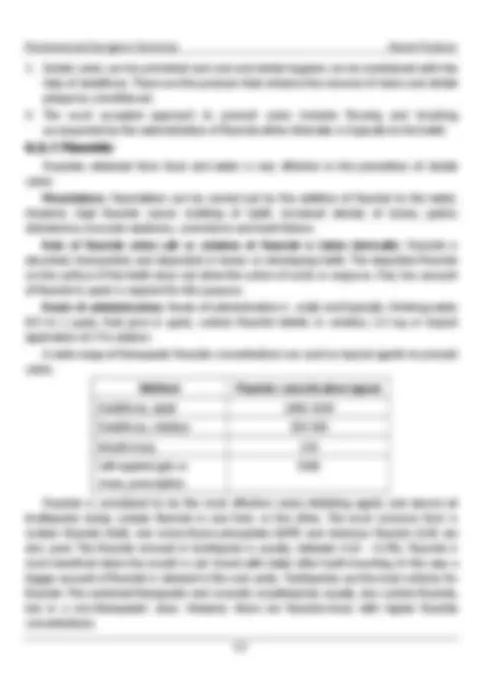
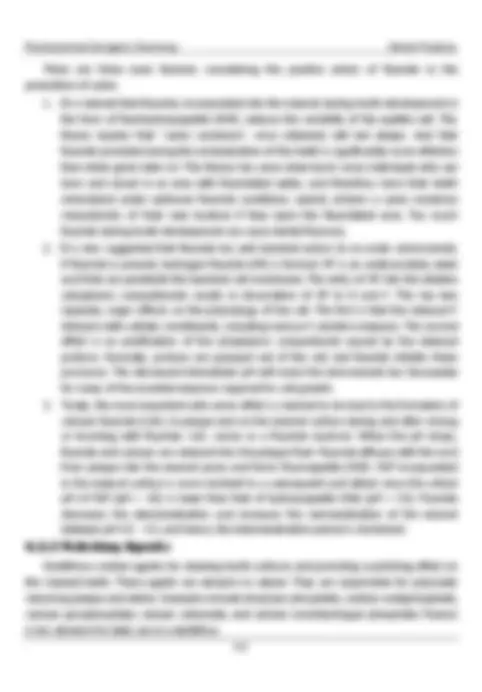
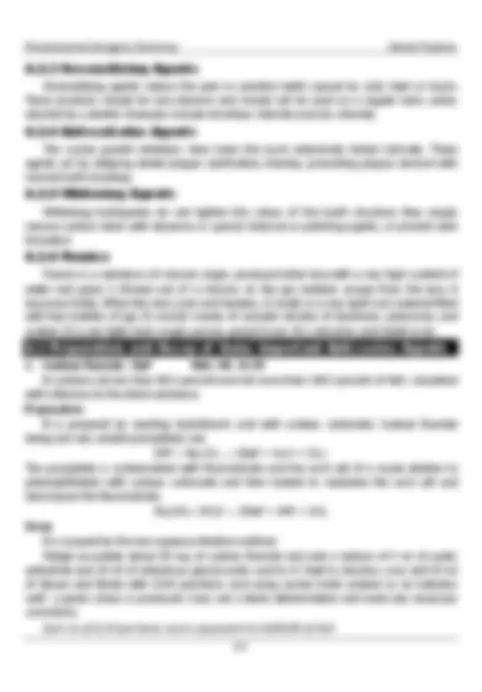
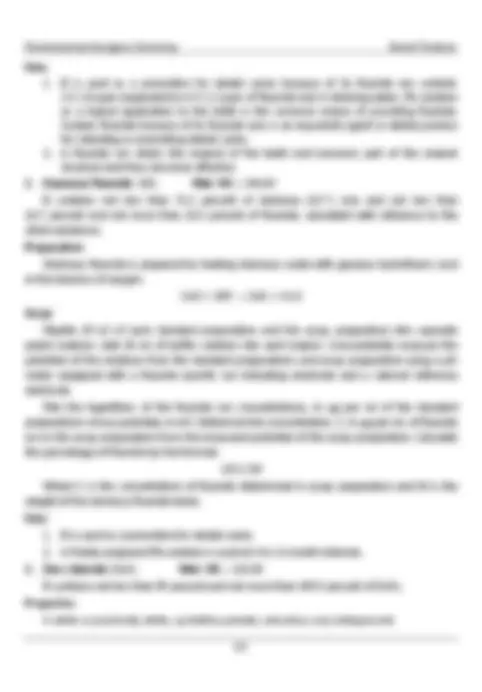
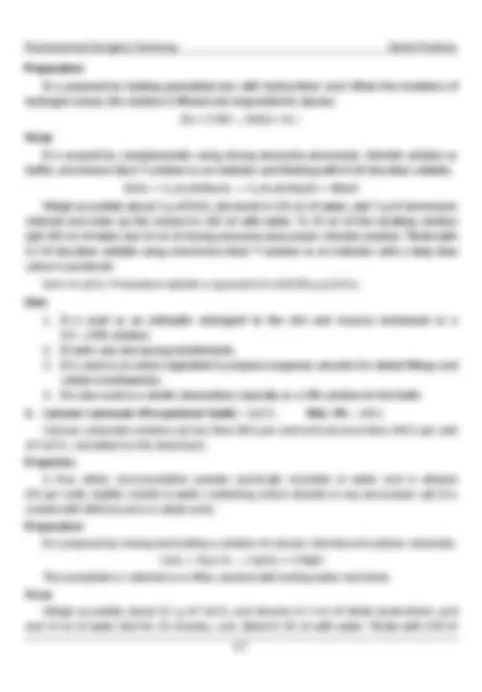
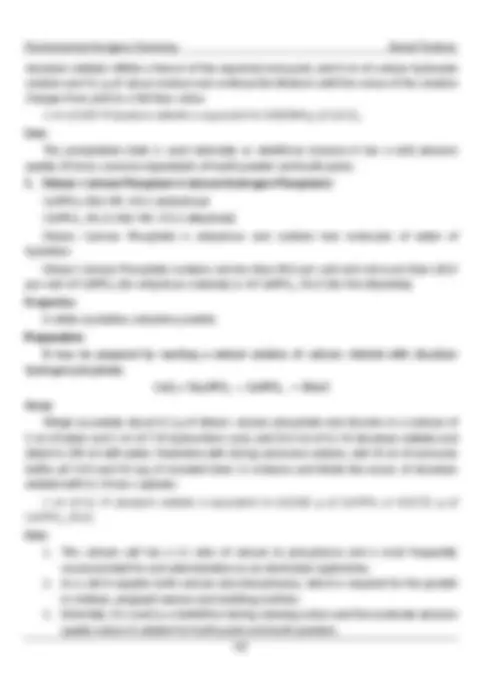
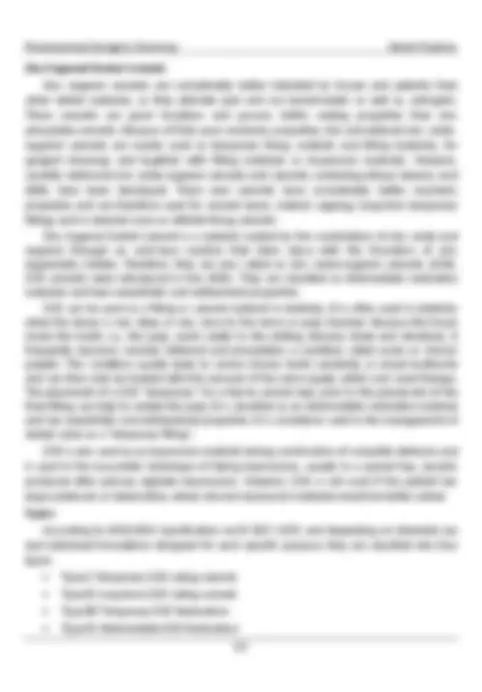
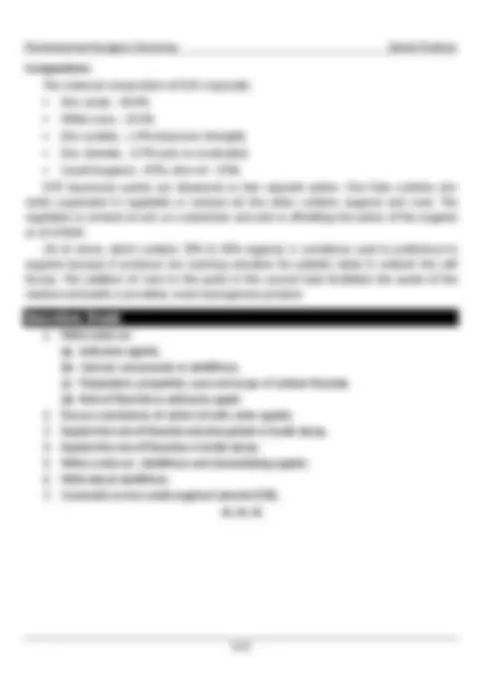
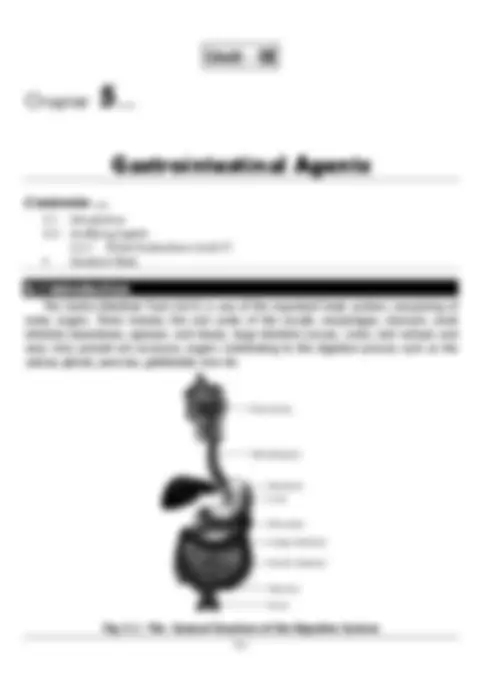
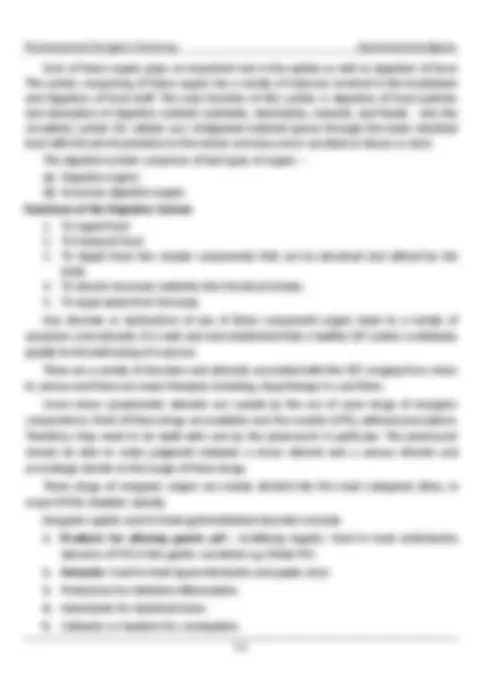
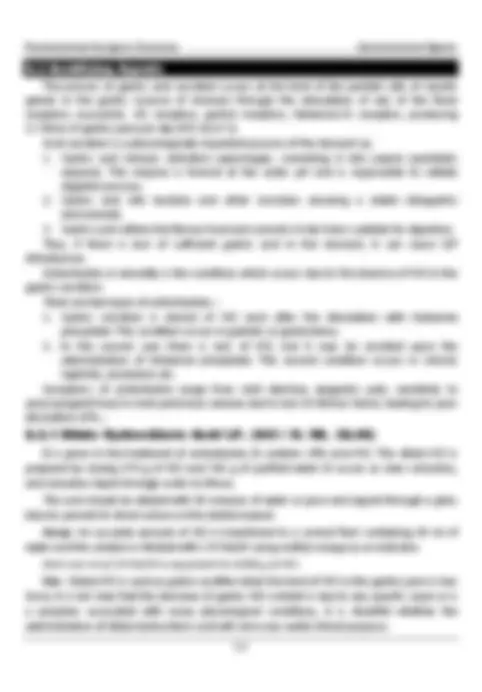
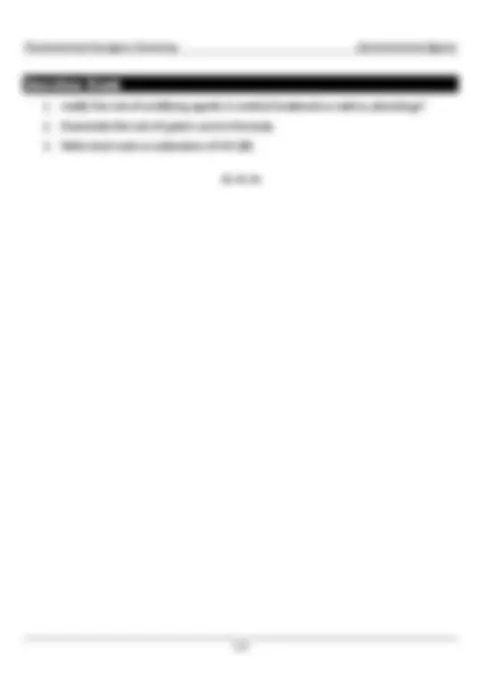
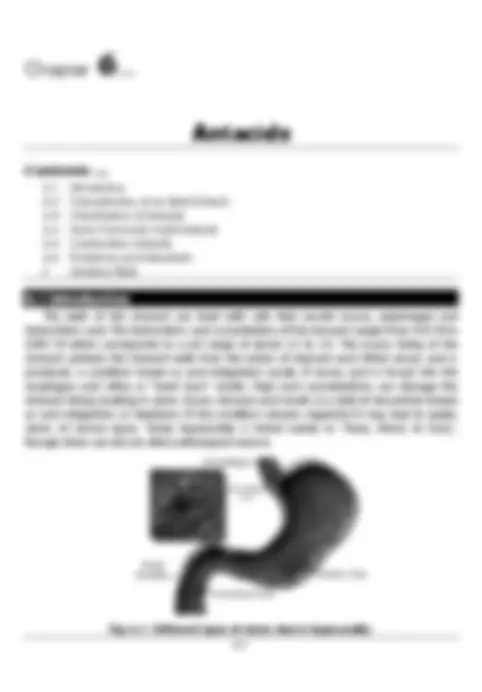
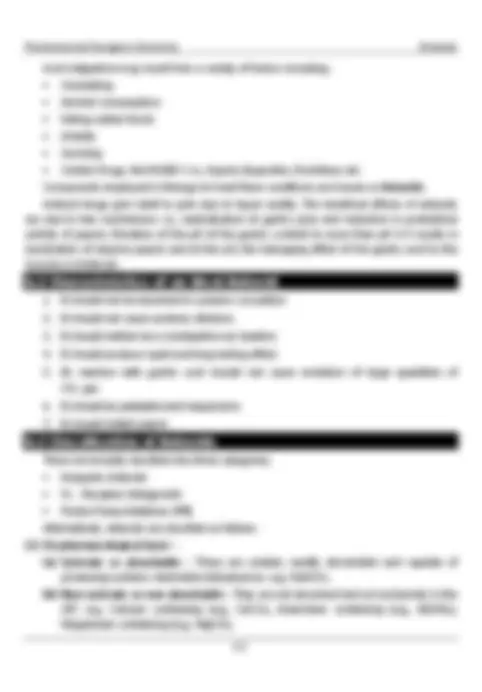
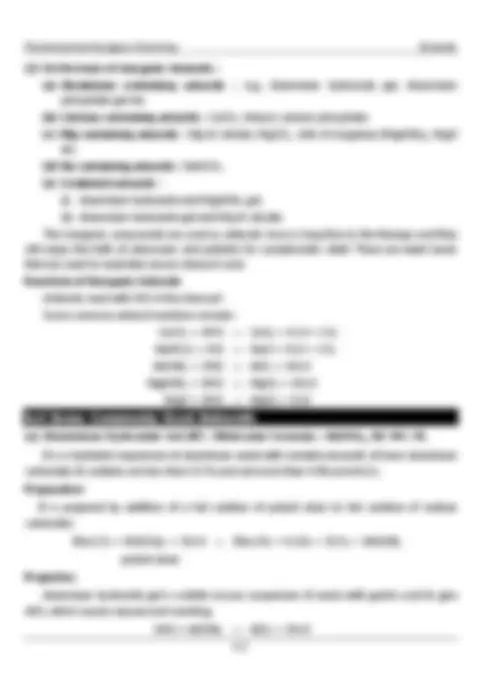
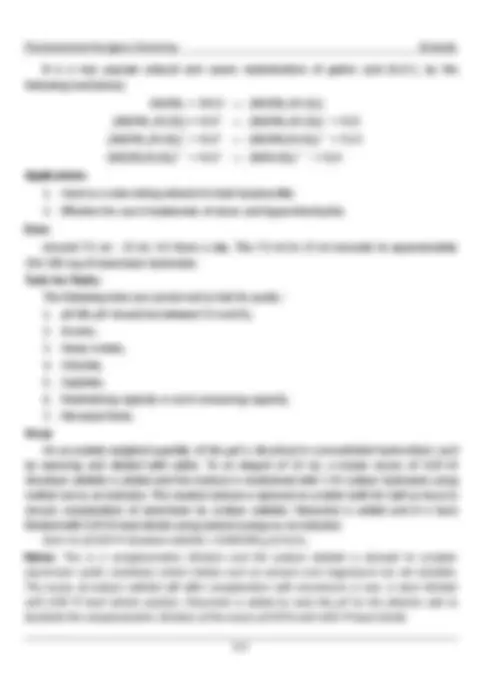
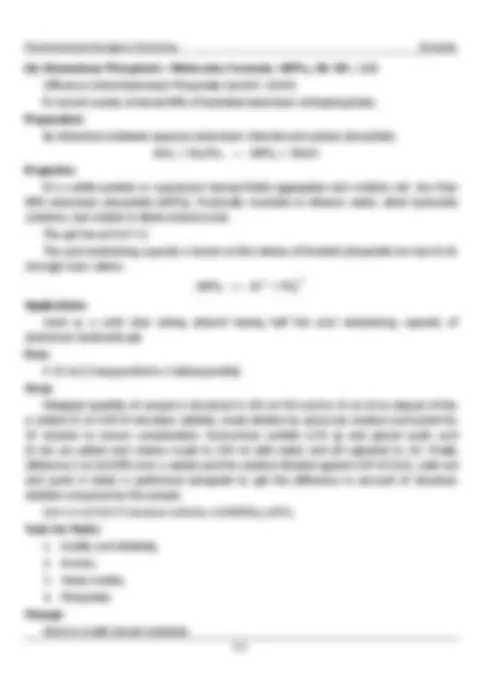
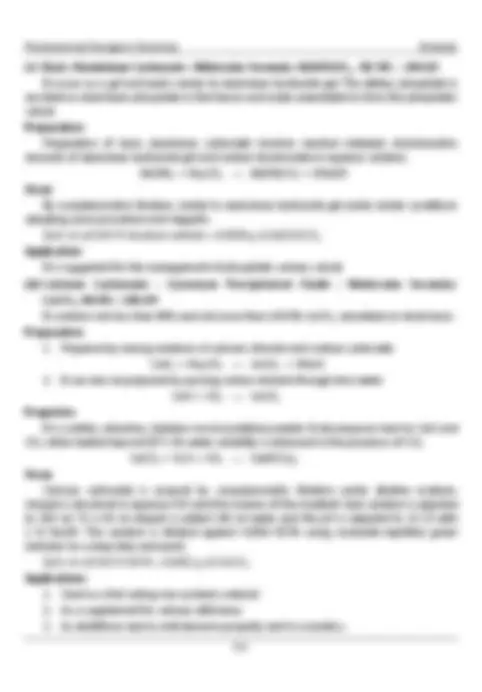
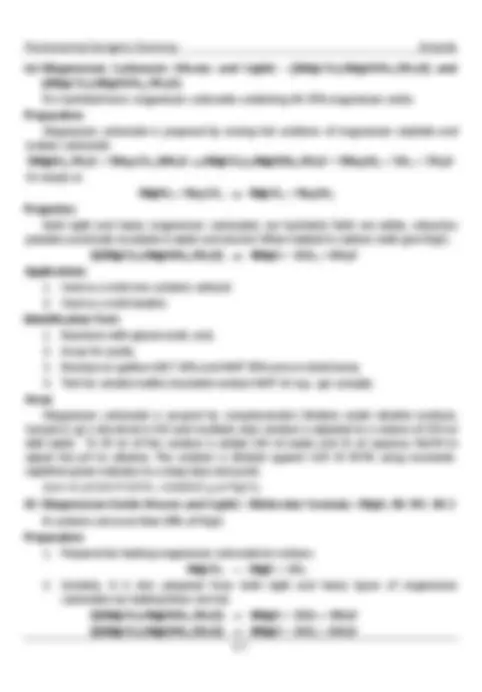
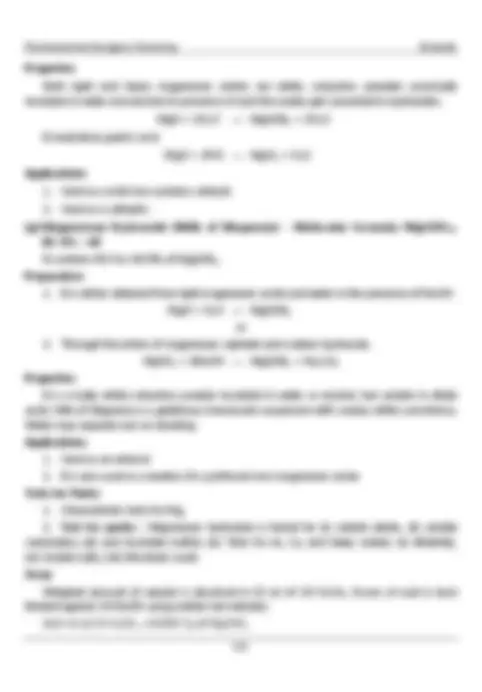
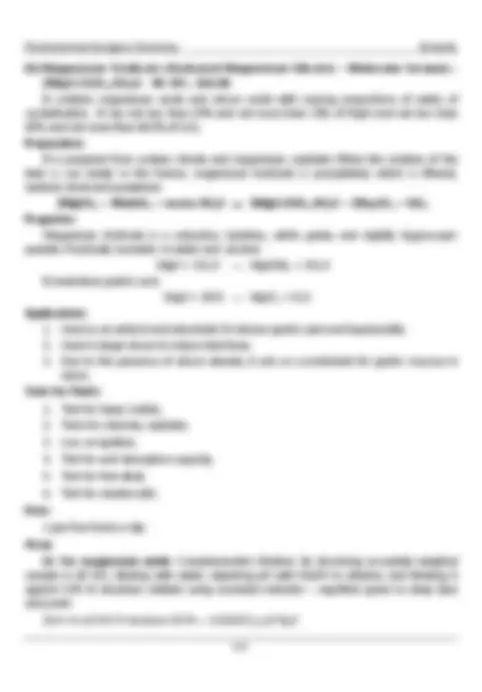
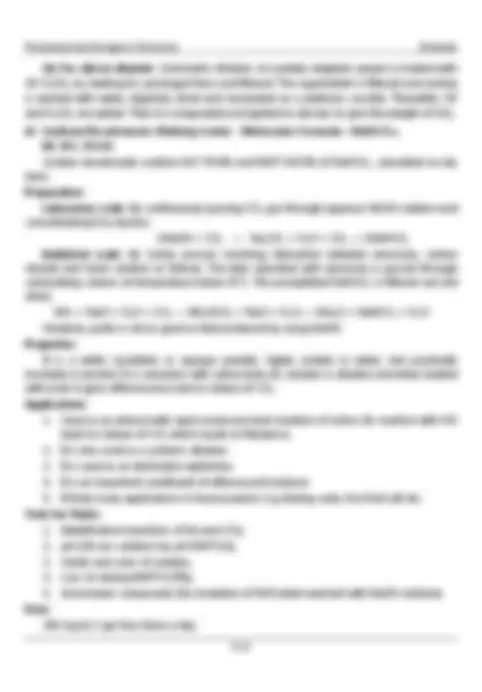
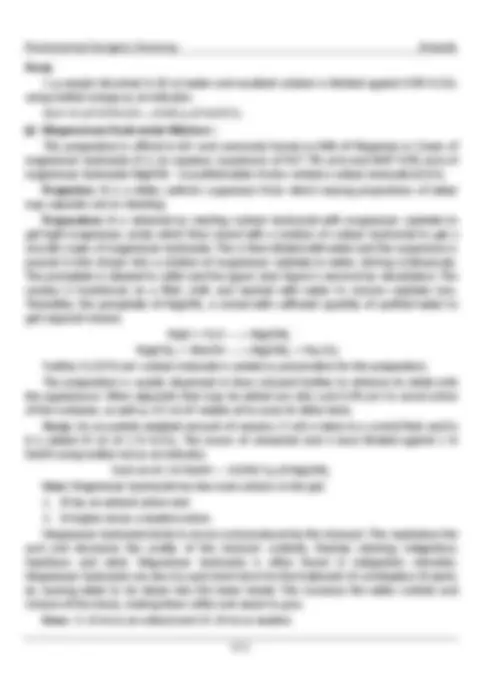
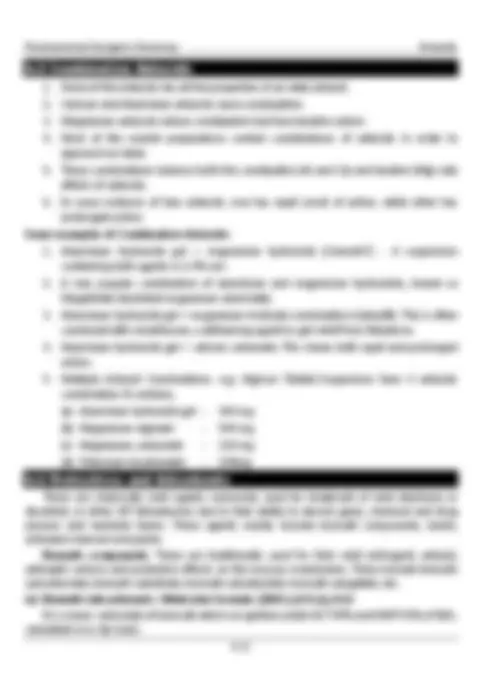
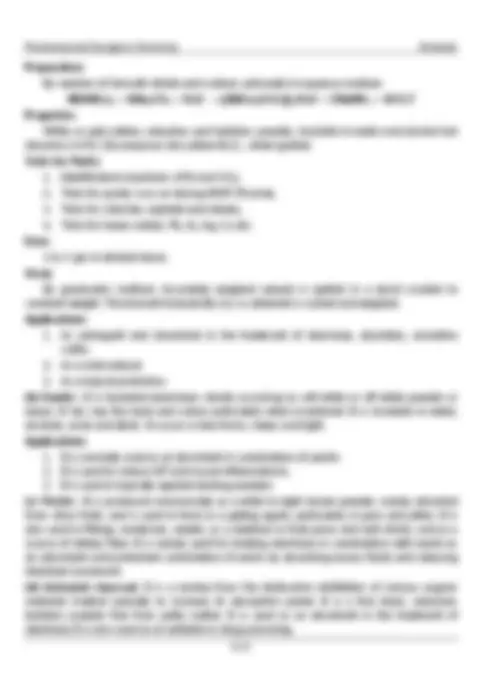


Study with the several resources on Docsity

Earn points by helping other students or get them with a premium plan


Prepare for your exams
Study with the several resources on Docsity

Earn points to download
Earn points by helping other students or get them with a premium plan
Community
Ask the community for help and clear up your study doubts
Discover the best universities in your country according to Docsity users
Free resources
Download our free guides on studying techniques, anxiety management strategies, and thesis advice from Docsity tutors
Its very helpful for pharmacy first year students of B.Pharm
Typology: Papers
1 / 178

This page cannot be seen from the preview
Don't miss anything!





























































































PH PHAARRMMAACCEEUUTTIICCAALL
IN INOORRGGAANNIICC CCHHEEMMIISSTTRRYY
F. Y. B.Pharm [Semester - I]
As Per PCI Syllabus
Dr. K. S. Jain Dr. P. B. Miniyar M. Pharm., Ph.D., FIC M. Pharm., Ph.D., FAGE Principal and Professor of Pharm. Chem. Prof. (Pharm. Chem.) and Senate Member (SPPU, Pune) K. K. Wagh Education Society’s Sinhgad Technical Education Society's K. K. Wagh College of Pharmacy Sinhgad Institute of Pharmacy, Narhe, Pune - 411 041 Panchwati, Nashik - 422 003
Dr. K. Ilango M. Pharm., Ph.D., FIC Professor, Department of Pharmaceutical Chemistry, SRM College of Pharmacy, SRM University Chennai - 603 203 (Tamil Nadu)
N
Dr. K. ILANGO is a Dean, Interdisciplinary Institute of Indian System of Medicine (IIISM) &
Professor, Department of Pharmaceutical Chemistry, SRM College of Pharmacy, SRM University,
Chennai. He completed his M. Pharm. & Ph. D. in Pharmaceutical Chemistry. He has total 25
years of teaching & 2 years of industrial experience. He has 175 research publications to his
credit in various International & National journals of repute. He has presented 99 papers in
National & 05 papers in International Conferences. He has written 04 text books & 04 book chapters. He has guided 12 Ph.D. students. His areas of research includes synthesis of various
heterocyclic nucleus using microwave technique; Development of analytical methods for new
pharmaceuticals by HPLC and Spectrophotometric methods; Isolation of active principles from
plant extracts and its biological screening.
Prof. K. Ilango is committed towards his role as an academician. His commitment, passion
and innovation in thinking has fetched him the “Best Teacher Award” in 2012 by Tamil Nadu
Dr. M.G.R. Medical University, Chennai, also bestowed with the “Outstanding Achievement
Award” by SRM College of Pharmacy, SRM University and Indian Pharmaceutical Association,
Chennai in 2013. GRABS Educational Charitable Trust has given him the “Best Research
Supervisor Award” in 2015 is one more remarkable achievement of Dr. K. Ilango for his
academic services.
He is a life member of various associations viz., APTI, IPA, IPGA, CSI, ISTE, ISC etc.
UNIT I
1. Impurities in Pharmaceutical Substances: History of Pharmacopoeia, Source and types of impurities, principle involved in the limit test for Chloride, Sulphate, Iron, Arsenic, Lead and Heavy metals, modified limit test for Chloride and Sulphate.
UNIT II
2. Acids, Bases and Buffers: Buffer equations and buffer capacity in general, buffers in pharmaceutical systems, preparation, stability, buffered isotonic solutions, measurements of tonicity, calculations and methods of adjusting isotonicity. 3. Major Extra and Intracellular Electrolytes: Functions of major physiological ions, Electrolytes used in the replacement therapy: Sodium chloride, Potassium chloride, Calcium gluconate and Oral Rehydration Salt (ORS), Physiological acid base balance. 4. Dental Products: Dentrifices, role of fluoride in the treatment of dental caries, Desensitizing agents, Calcium carbonate, Sodium fluoride, and Zinc eugenol cement.
UNIT III
5. Gastrointestinal Agents Acidifiers: Ammonium chloride and Dil. HCl. 6. Antacid: Ideal properties of antacids, combinations of antacids, Sodium bicarbonate, Aluminium hydroxide gel, Magnesium hydroxide mixture. 7. Cathartics: Magnesium sulphate, Sodium orthophosphate, Kaolin and Bentonite. 8. Antimicrobials: Mechanism, classification, Potassium permanganate, Boric acid, Hydrogen peroxide, Chlorinated lime, Iodine and its preparations.
UNIT IV
9. Miscellaneous Compounds: Expectorants: Potassium iodide, Ammonium chloride. Emetics: Copper sulphate, Sodium potassium tartarate. Haematinics: Ferrous sulphate, Ferrous gluconate. Poison and Antidote: Sodium thiosulphate, Activated charcoal, Sodium nitrite. Astringents: Zinc sulphate, Potash alum.
UNIT V
10. Radiopharmaceuticals: Radio activity, Measurement of radioactivity, Properties, of α, β, γ radiations, Half life, radioisotopes and study of radioisotopes - Sodium iodide I^131 , Storage conditions, precautions and pharmaceutical application of radioactive substances.
1.
Contents …
1.1 Inorganic Chemistry 1.1.1 Importance of Inorganic Pharmaceuticals 1.2 Pharmacopoeia 1.2.1 History of Pharmacopoeia 1.2.2 Indian Pharmacopoeia 1.2.3 Indian Pharmacopoeia 2010 1.2.4 Indian Pharmacopoeia 2014 1.2.5 Indian Pharmacopoeia 2018 1.2.6 British Pharmacopoeia 1.2.7 European Pharmacopoeia 1.2.8 Pharmacopoeia International (International Pharmacopoeia) 1.2.9 United States Pharmacopoeia (USP) 1.3 Official Monograph 1.4 New Inclusion / Exclusion of Monograph 1.5 Sources of Impurities 1.6 Limit Tests 1.6.1 Limit Test for Chlorides 1.6.2 Limit Test for Sulphates 1.6.3 Limit Test for Iron 1.6.4 Limit Test for Lead 1.6.5 Limit Test for Heavy Metals 1.6.6 Limit Test for Arsenic 1.6.7 Limits of Insoluble and Soluble Matter 1.7 Qualitative Tests for Alkali and Alkaline Earth Metals 1.8 Modified Limit Tests for Chlorides and Sulfates
Pharmaceutical Inorganic Chemistry Impurities in Pharmaceutical Substances
1.
Inorganic chemistry is the study of all the elements and their compounds except carbon and its compounds (which is studied under organic chemistry). Inorganic chemistry describes the characteristics of substances such as nonliving matter and minerals which are found on the earth except the class of organic compounds. Branches of inorganic chemistry include coordination chemistry, bioinorganic chemistry, organometallic compounds and synthetic inorganic chemistry. The distinction between the organic and inorganic is not absolute, and there is much overlap, especially in the organometallic chemistry, which has applications in every aspect of the pharmacy, chemical industry–including catalysis in drug synthesis, pigments, surfactants and agriculture. In short, inorganic chemistry is the branch of chemistry that deals with inorganic compounds. In other words, it is the chemistry of compounds that do not contain hydrocarbon radicals (mainly C and H elements).
Inorganic pharmaceuticals are useful in any of the following ways :
The word Pharmacopoeia is derived from Greek words ‘pharmakon’ means a drug (both remedy and poison) and ‘poiein’ means to make or create. Pharmacopoeia is a book containing directions for the identification of samples and the preparation of compound medicines, and published by the authority of a government or a medical or pharmaceutical society. For this reason, Pharmacopoeia is a legislation of a nation which sets standards and mandatory quality indices for drugs, the raw materials used to prepare them and the various pharmaceutical preparations.
Each country has legislation on pharmaceutical preparations which sets standards and required quality indices for medicament, raw materials and preparations employed in the manufacture of drugs. These regulations are presented in separate articles. General and specific matters relating to individual drugs are published in the form of a book called a Pharmacopoeia.
Pharmaceutical Inorganic Chemistry Impurities in Pharmaceutical Substances
1.
Pharmacopoeia 2007 was published which had taken care of the amendments to Indian Pharmacopoeia 2007 and also incorporated 72 new monographs.
The sixth edition of Indian Pharmacopoeia published in accordance with the principles and designed plan decided by the scientific body of the IPC. To establish transparency in setting standards for this edition, the contents of new monographs, revised appendices and other information have been published on the website of IPC, besides following conventional approach of obtaining comments.
The Indian Pharmacopoeia 2010 has been considerably revised and improved with respect of the requirements of monographs, appendices and testing protocols by introducing advanced technology.
The contents of appendices are by and large revised in line with those adopted internationally. The monographs of special relevance disease of this region have been given special attention.
Table 1.1 : Features of various Editions of Indian Pharmacopoeia Sr. No. of Edition
Year of publication
Name of Chairman
Year of addendum released
Features of edition
First 1955 Dr. B. N. Ghosh 1960 Contains both western and traditional system drugs commonly used in India. Second 1966 Dr. B. Mukherjee 1975 Contains both western and traditional system drugs commonly used in India. Third 1985 Dr. Nityanand 1989 (1st) 1991 (2nd)
In this Pharmacopoeia, inclusion of traditional system of drugs was limited. However, most of the new drugs manufactured and/or marketed were included while only those herbal drugs which had definite quality control standards had got place in it. Fourth 1996 Dr. Nityanand 2000 (1st) 2002 (2nd) 2005 (3rd)
It focuses on those drugs and formulations that cover the National Health Care Programmes and the National essential medicines. It contained monographs on antiretroviral, anticancer, anti-tubercular and herbal drugs. It further emphasised on biological monographs such as vaccines, immunosera for human use, blood products, biotechnological and veterinary (biological and non-biological) preparations …… …… (Contd.)
Pharmaceutical Inorganic Chemistry Impurities in Pharmaceutical Substances
1.
Sr. No. of Edition
Year of publication
Name of Chairman
Year of addendum released
Features of edition
Fifth 2007 Mr. Prasanna Hota (until 30 October
2008 It is presented in 3 volumes :
2015 It is presented in four volumes, and includes products of biotechnology, indigenous herbs, herbal products, veterinary vaccines and additional antiretroviral drugs, as well as, formulations, inclusive of commonly used fixed-dose combinations. Standards for new drugs and drugs used under National Health Programmes are added, while the drugs and their formulations, not used currently are deleted from this edition. The IP 2014 incorporates 2548 monographs of drugs, among these 577 are new monographs consisting of APIs, excipients, dosage forms, antibiotic monographs, insulin products and herbal products etc. 19 New Radiopharmaceutical Monographs and 1 general chapter is being included in this edition for the first time. …… …… (Contd.)
Pharmaceutical Inorganic Chemistry Impurities in Pharmaceutical Substances
1.
liposomal Amphotericin B injection is added advantage in view of latest technology adopted for drug delivery. A chapter on NMR is incorporated in appendices. The chapter on microbial contamination is also updated to a great extend to harmonise with prevailing International requirements.
Basis of Pharmaceutical Requirements
This compendium provided a statement concerning the quality of a product that can be expected and demonstrated at any time throughout the accepted shelf life of the article. The standards laid down represent the minimum with which the article must comply and is manufactured in accordance with then GMPs.
Also it is essential that sufficiently stringent limits are applied at the time of release of a batch of a drug substance or drug product so that the pharmacopoeial standards are met until its expiry date when stored under the storage conditions specified.
Valid interpretation of any requirement of Indian Pharmacopoeia has to be done in the context of the monographs and where appropriate, the specified tests and methods of analysis including any reference to relevant general notices to be performed. Familiarity with the general notices will facilitate the correct application of the requirements.
Changes
General chemical tests for identification of an article have been almost eliminated and the more specific infrared and ultraviolet spectrophotometric tests have been given emphasis.
The concept of relying on published infrared spectra as a basis for identification has been continued. The use of chromatographic methods has been greatly extended to meet the need for more specificity in assays and in particular, in assessing the nature and extent of impurities in drug substances and drug products. Most of the existing assays and related substance tests are upgraded by liquid chromatography method in view to have more specificity and to harmonise with other International Pharmacopoeias.
The test for pyrogens involving the use of animals has been eliminated. The test for bacterial endotoxins introduced in the previous edition is now applicable to more items. The test for abnormal toxicity is now confined to certain vaccines.
Highlights
Pharmaceutical Inorganic Chemistry Impurities in Pharmaceutical Substances
1.
Highlights
In the year 1864, the first British Pharmacopoeia was published by combining the three
old and reputed Pharmacopoeias namely Pharmacopoeia Londinensis (1618) Edinburgh
Pharmacopoeia (1699) and Dublin Pharmacopoeia (1807). The 2nd^ edition was released in
Pharmaceutical Inorganic Chemistry Impurities in Pharmaceutical Substances
1.
The British Pharmacopoeia i.e., British Pharmacopoeia 2013 comprised of six volumes
containing nearly 3,000 monographs for drug substances, excipients and formulated
preparation, together with supporting general notices, appendices (test methods, reagents
etc.) and reference spectra used in the practice of medicine in 5 volumes.
Also a single volume of the British Pharmacopoeia (Veterinary) 2013, along with a fully
searchable CD-ROM and online access which provided flexible resources was provided.
The British Pharmacopoeia 2013 contained 41 new British Pharmacopoeia monographs,
40 new European Pharmacopoeia monographs, 619 amended monographs, 6 new and
1 amended infrared reference spectra and European Pharmacopoeia 7th^ edition material up
to and including Supplement 7.5. In addition updates in January, April and July to
harmonised with the European Pharmacopoeia were also provided.
The latest edition of the British Pharmacopoeia i.e., British Pharmacopoeia 2014
comprises five volumes and a single volume of the British Pharmacopoeia (Veterinary) 2014,
along with a fully searchable CD-ROM and online access to provide with flexible resources.
Highlights of British Pharmacopoeia 2014
An official book of standards adopted by Germany, France, Italy, Netherlands, Switzerland
and Belgium is the European Pharmacopoeia. In July 1964, the council of Europe issued an
order, to frame out European Pharmacopoeia.
From 1969 onwards in the respective member countries it appeared as official standard
book for medicinal substances and other drugs.
In various countries there is no uniformity in terminology and strengths of
pharmaceutical preparations used. In the year 1874, a view had been expressed that some world uniformity in the standards for potent drugs must be necessary to overcome various
problems. These views were further endorsed in second International conference held in
Pharmaceutical Inorganic Chemistry Impurities in Pharmaceutical Substances
1.
1925 where an International agreement on the Unification of formulae for seventy seven
potent drugs and preparations were reached. In 1936 the Health Organisation of the League of Nations established a technical commission of Pharmacopoeial experts.
The work was undertaken by the WHO after the World War II ended in 1946. Finally, volume I of the International Pharmacopoeia was published in 1951 in Latin with translations in English and French.
This International Pharmacopoeia contained monographs for over two hundred drugs and chemicals, with appendices on reagents tests and biological assays. Latter in the year 1955 the second volume was published which contained formulae for preparations having various drugs and substances already present in volume I.
In 1959 the supplement for 1st^ edition was released with incorporation of some newer drugs and substances with its method of preparations and the appropriate tests.
In 1967 the 2nd^ edition of International Pharmacopoeia was published, followed by a supplement in 1971. 3rd^ edition of International Pharmacopoeia was published in the form of several volumes, of which volume I appeared in 1979.
In 1817, Dr. Lyman Spalding proposed a plan to publish a National Pharmacopoeia to the medical society of the country at New York. On 15th^ December 1820 the first edition of United States Pharmacopoeia was published with 217 drugs in about 272 pages.
After the gap of ten years further editions of USP appeared. The 19th^ edition of USP was published in the year 1905. However, it was given the title of USP VIII as to show that it was 8 th^ revision.
Pharmacopoeia must be revised every 5 years was suggested in the 1940 convention. On July, 5th^ 1974, unification of the USP and NF (National Formulary) was announced. Afterwards in the subsequent editions consolidated USP and NF into a single volume were published. USP covers all drug substances and drug products; whereas NF covers only pharmaceutical ingredients.
In January 1990, the 22nd^ edition of USP combined with 17th^ edition of NF was published. The current version of USP–NF standards deemed official by USP are enforceable by the United States Food and Drug Administration (US-FDA) for medicines manufactured and marketed in the United States.
The latest edition, USP 36–NF 31, published on November 1, 2012 in English, and became official from May 1, 2013. It contains more than 4,600 monographs with specifications for
identity, strength, quality, purity, packaging, and labeling for substances and dosage forms. It also comprises more than 260 general chapters providing clear, step-by-step guidance for
assays, tests, and procedures. Moreover it also focuses on specific charts and a combined index which help us to find the information.